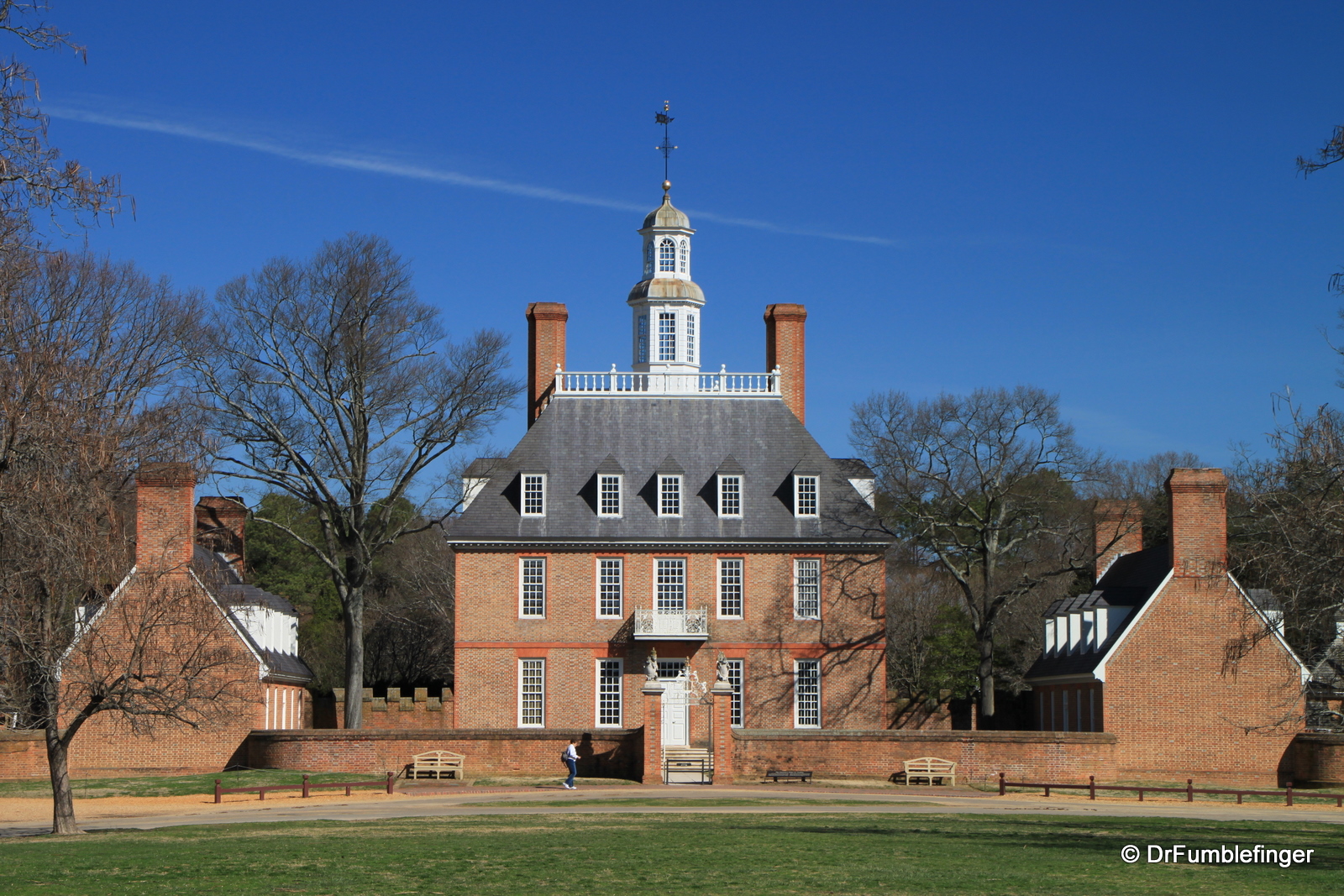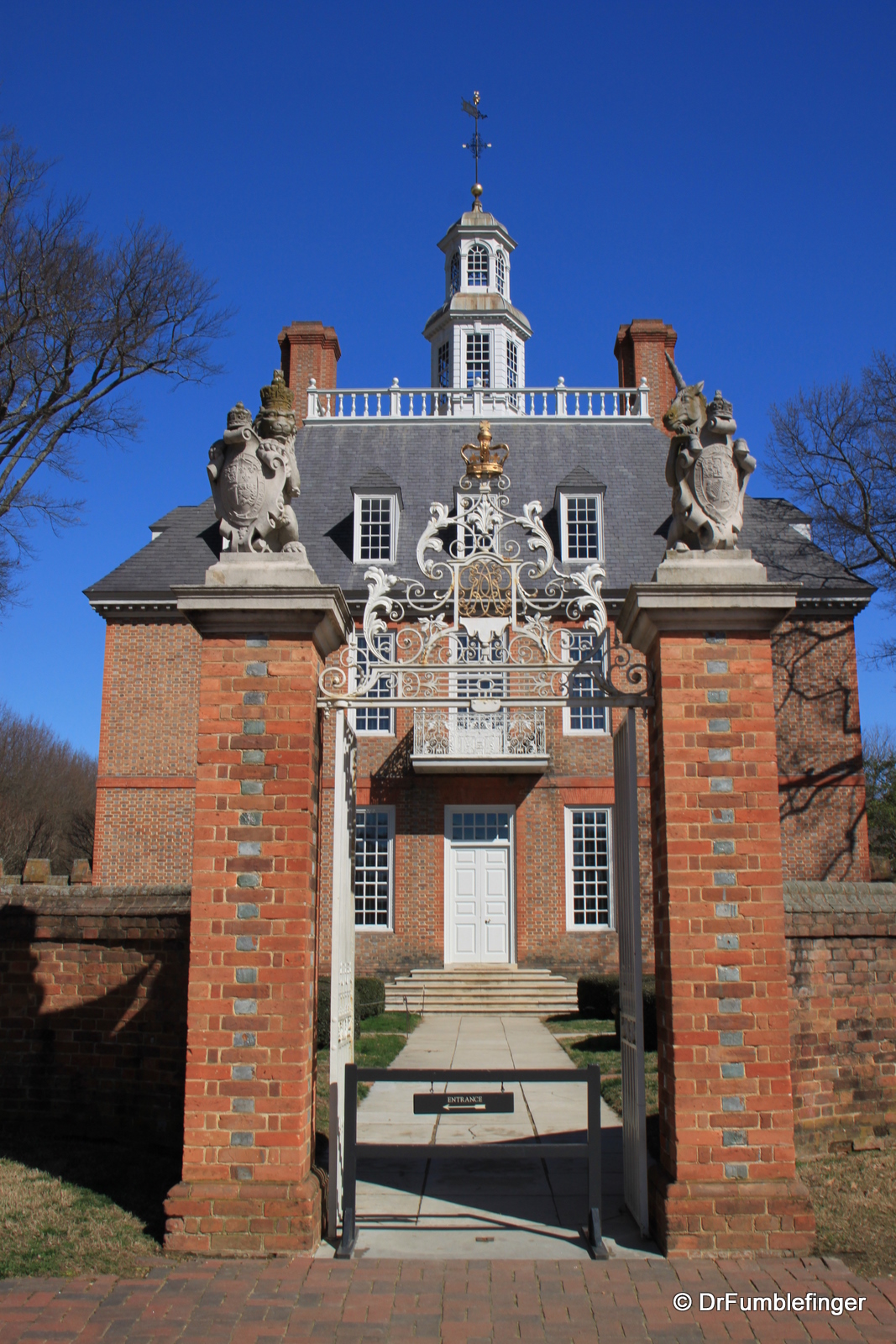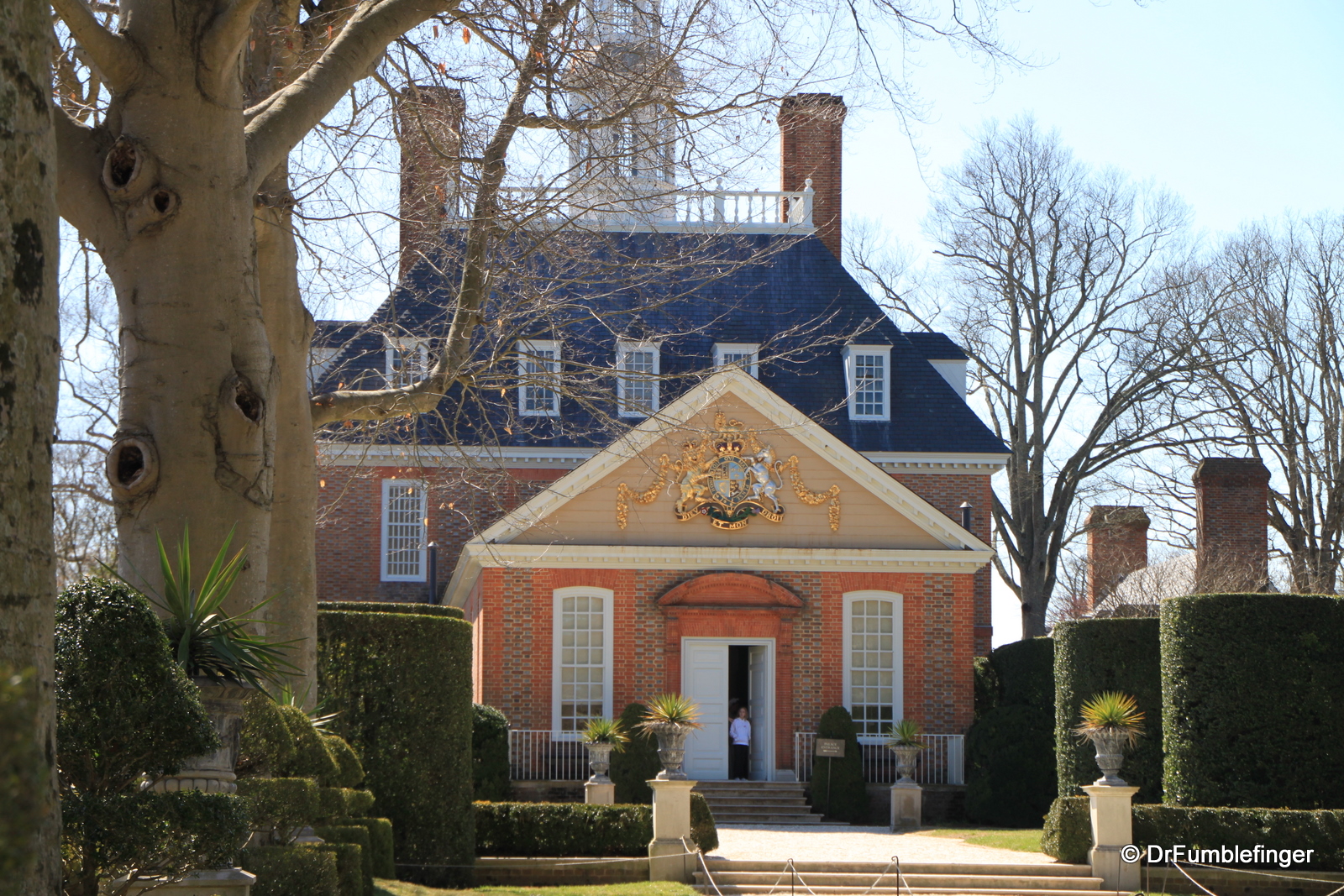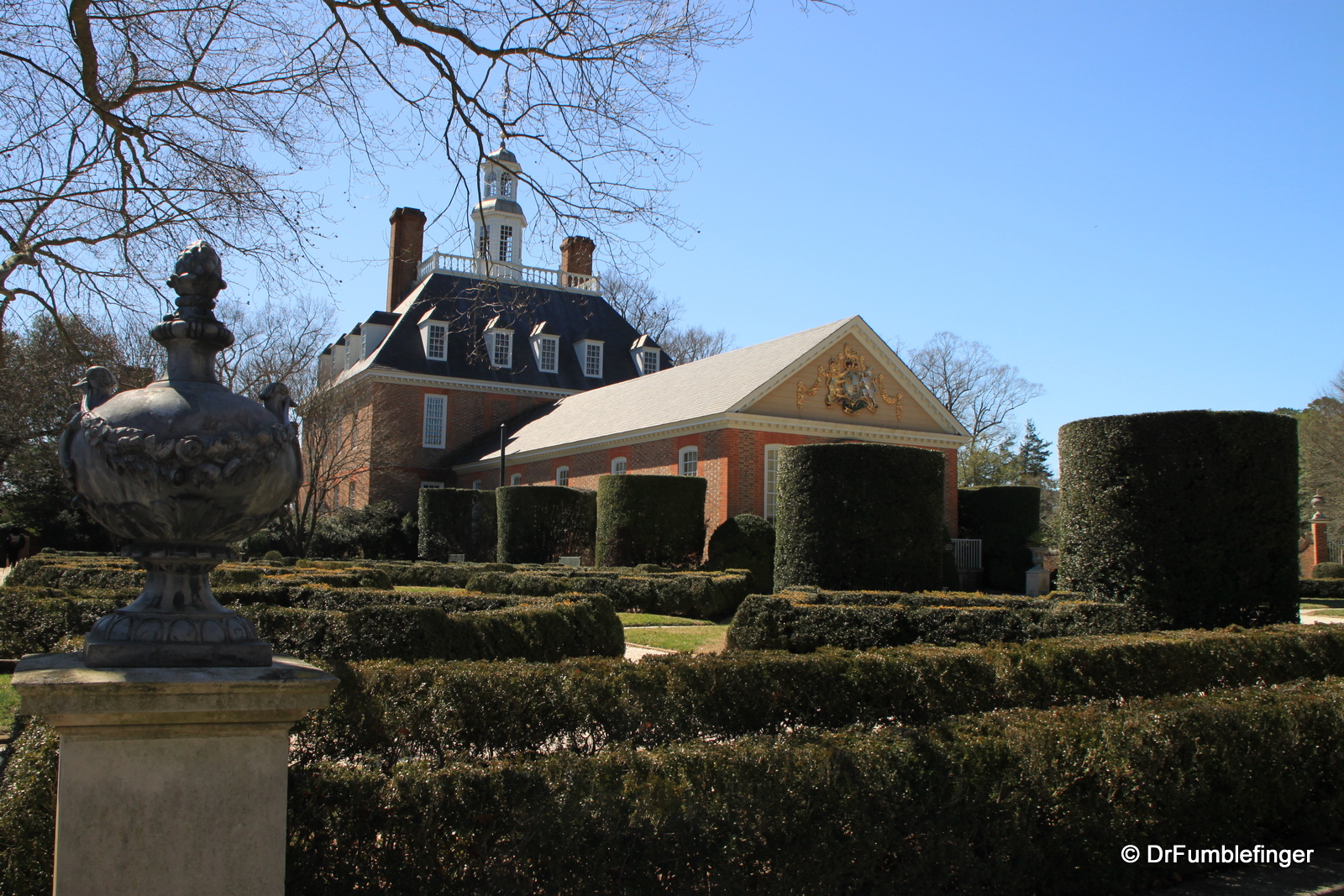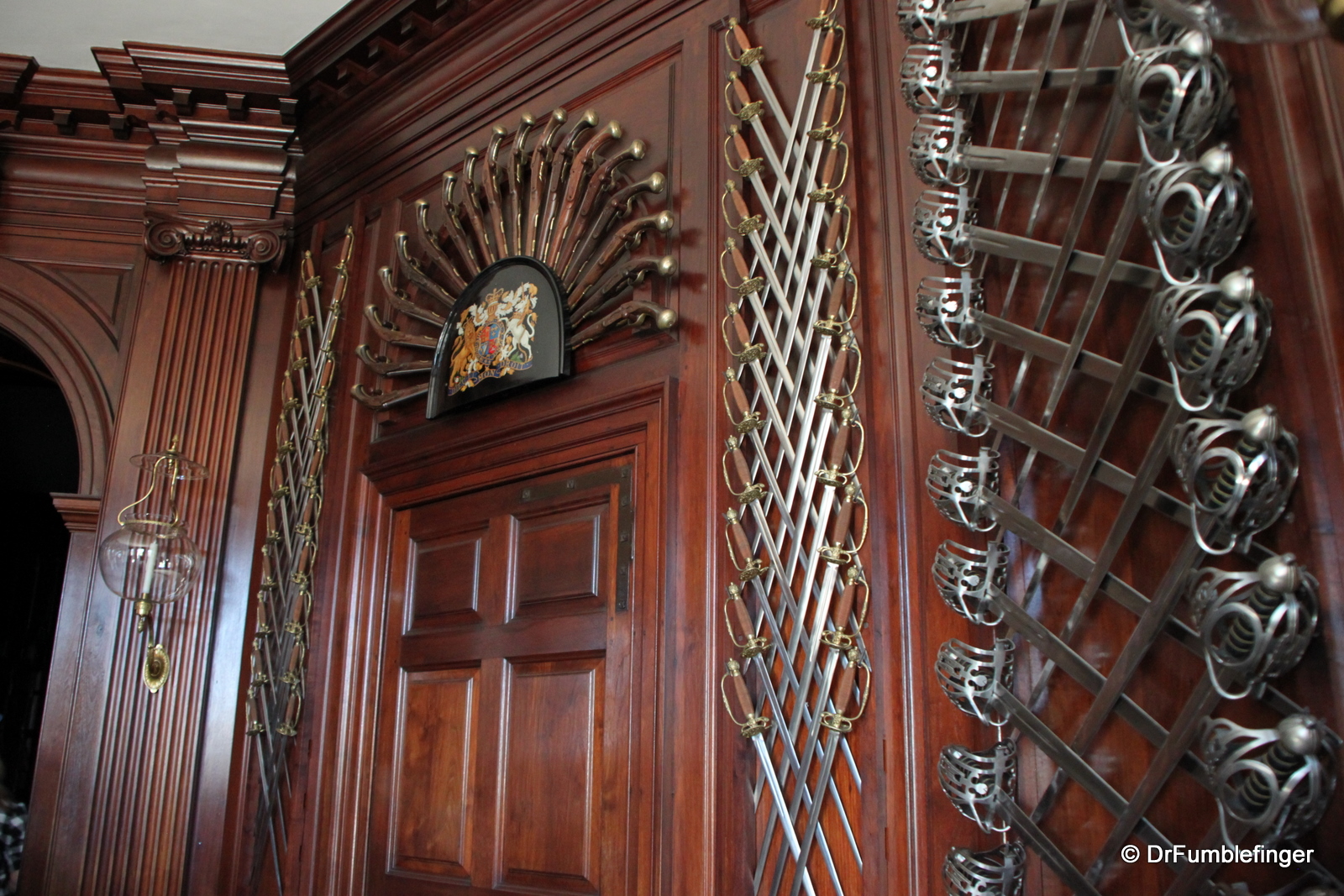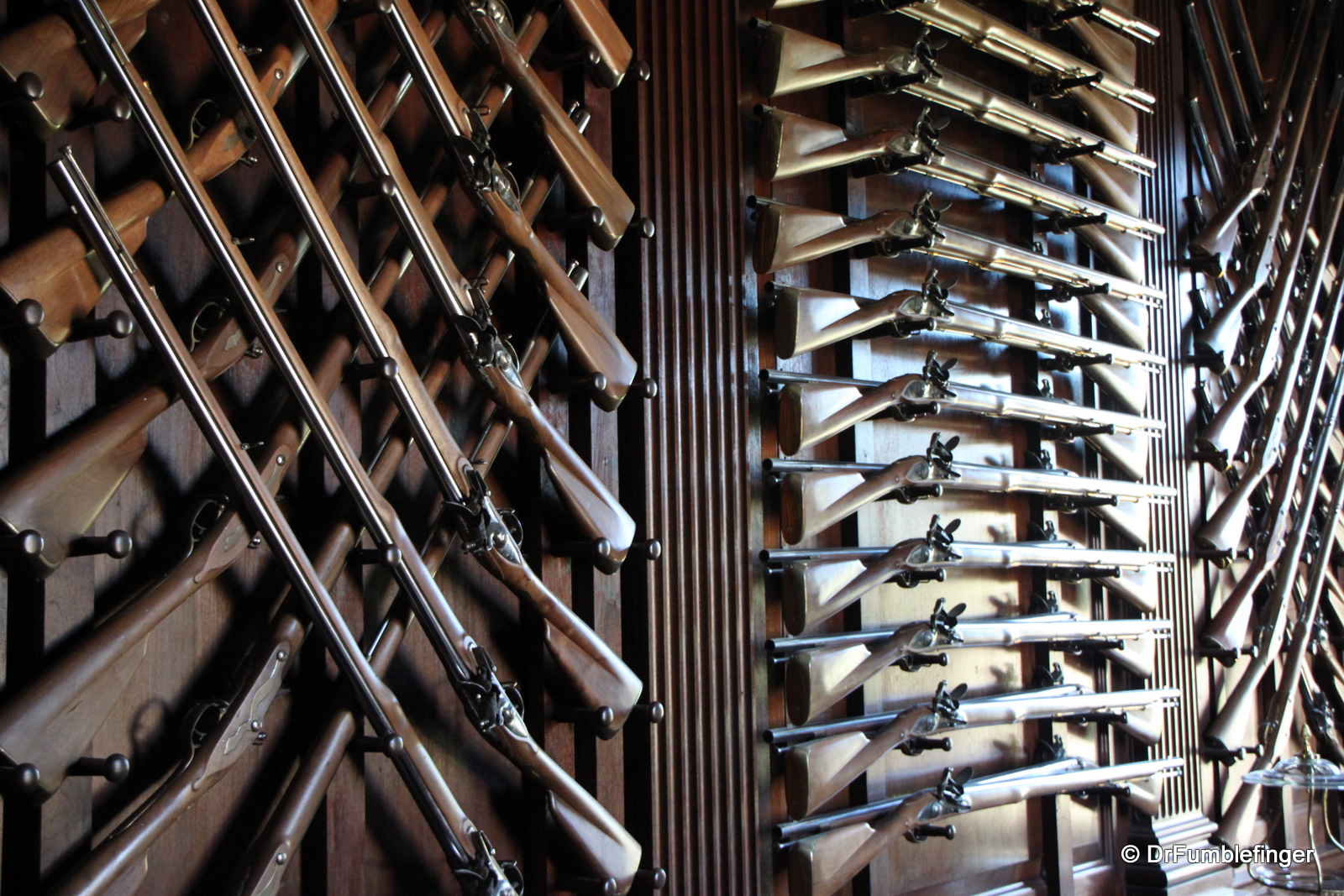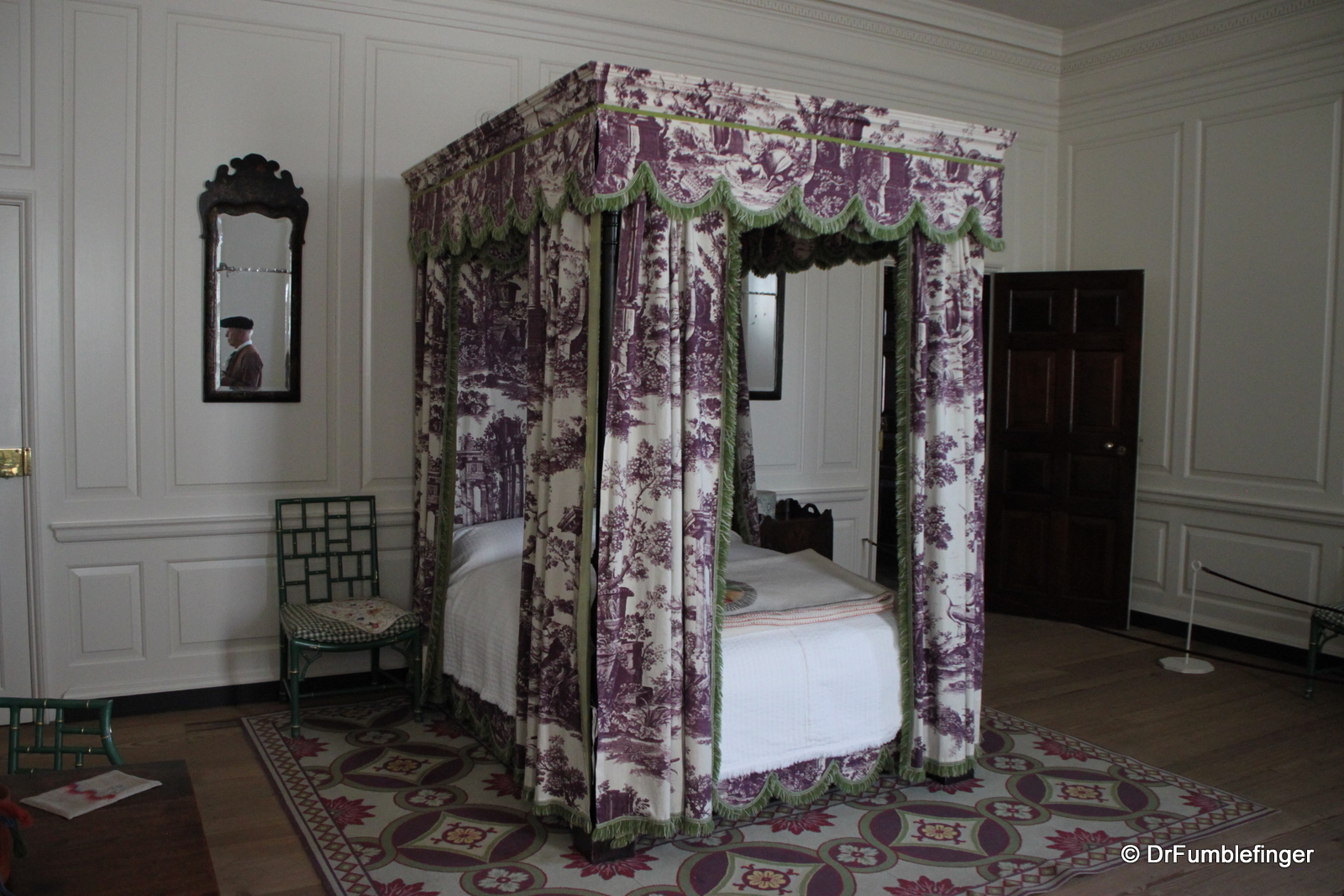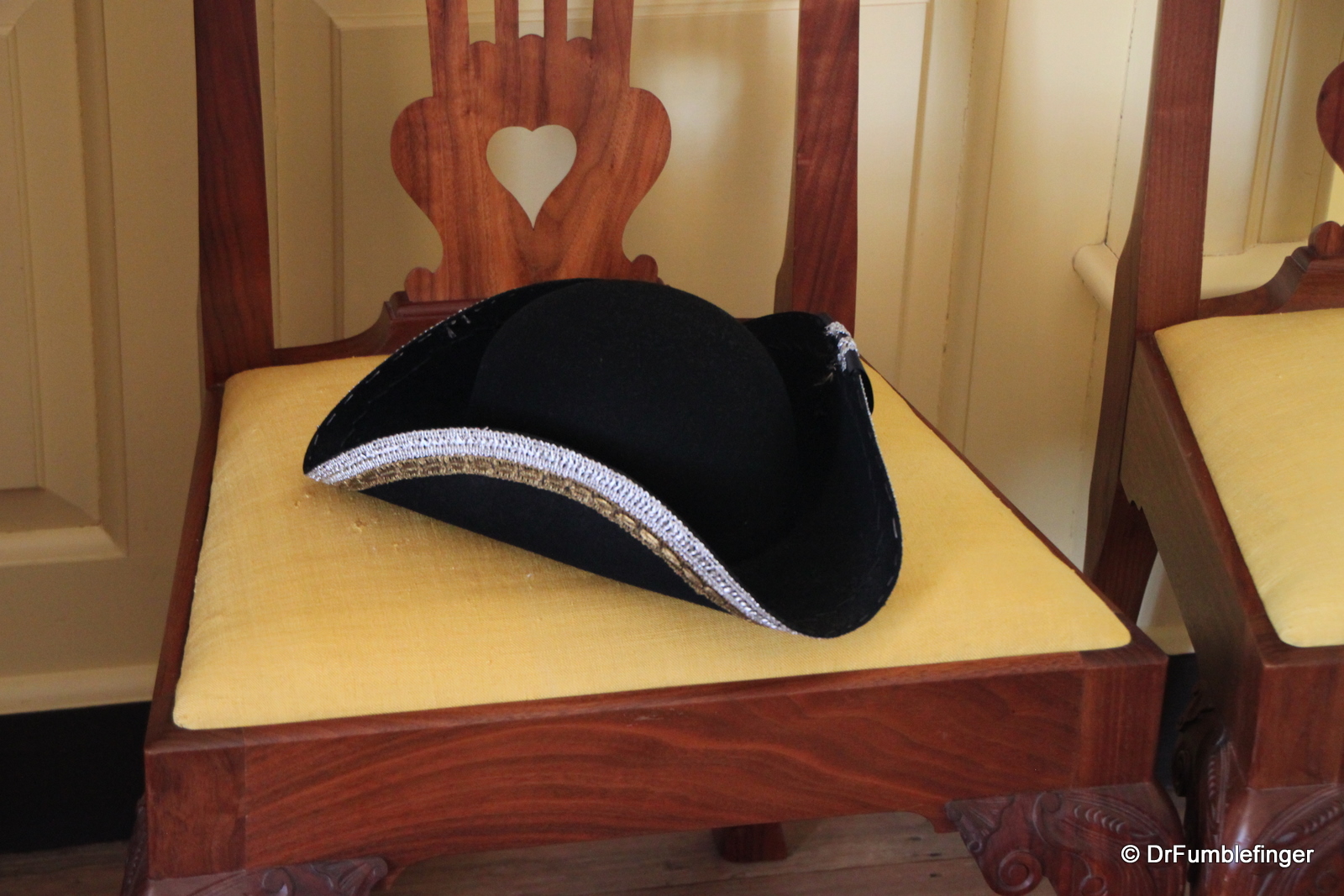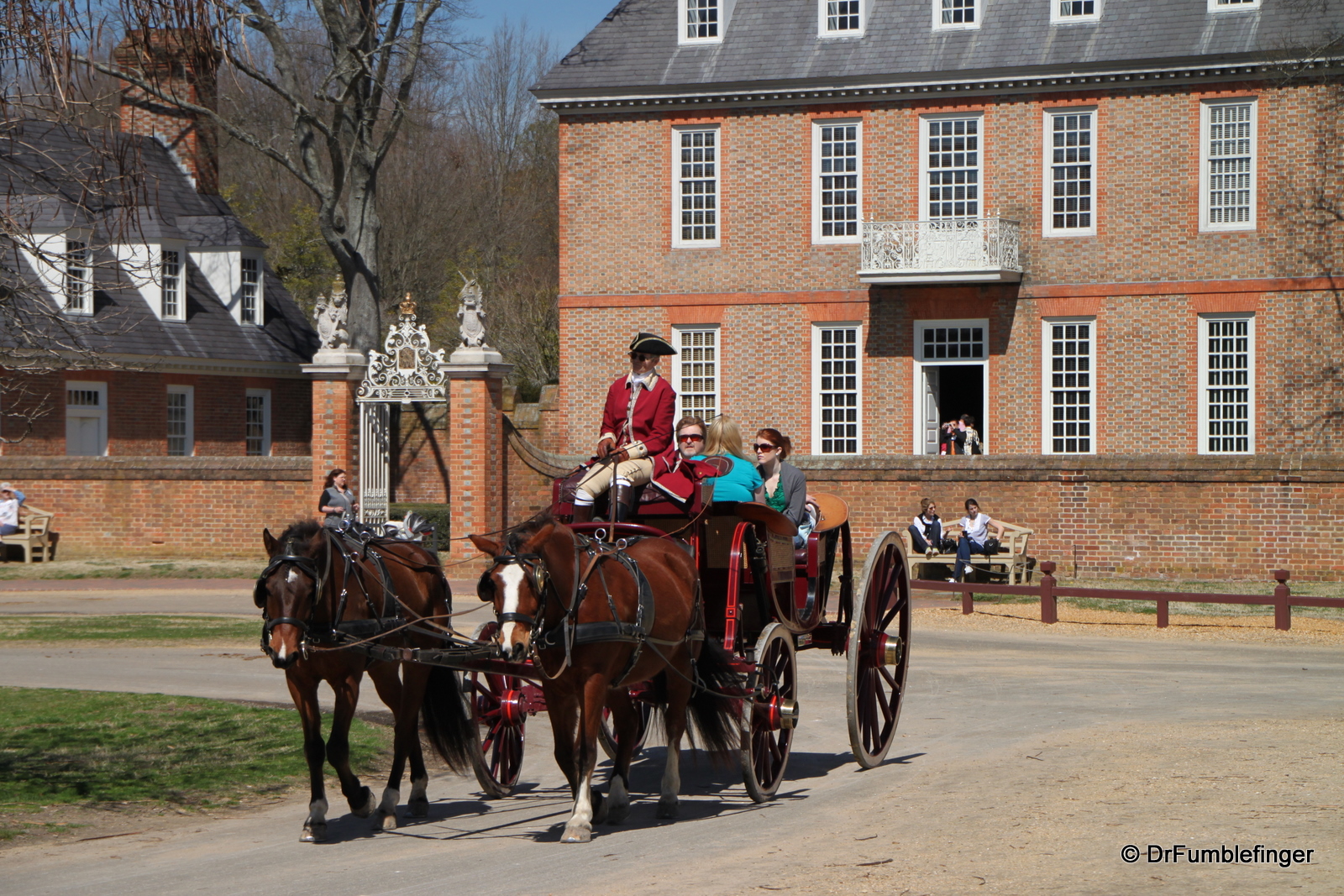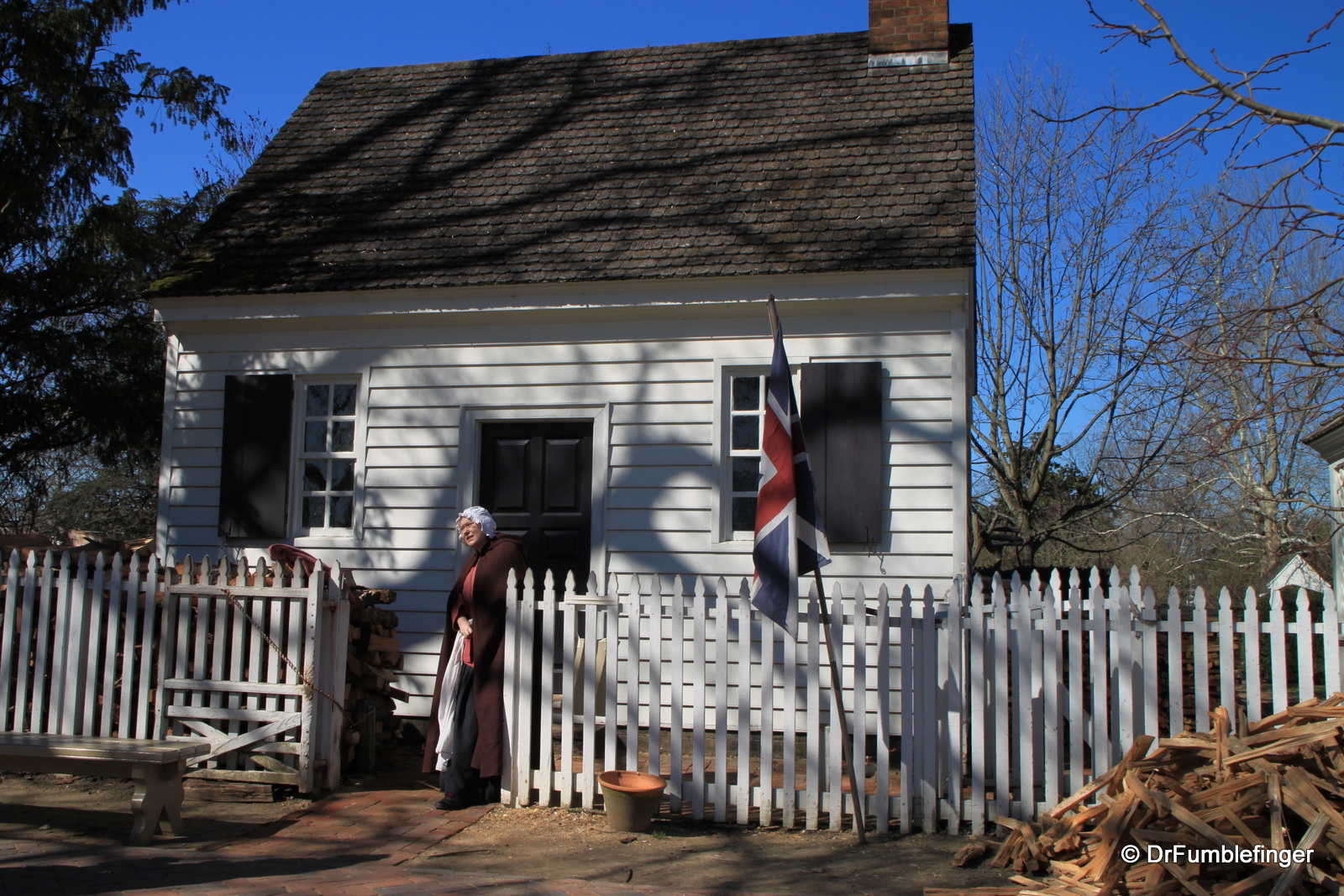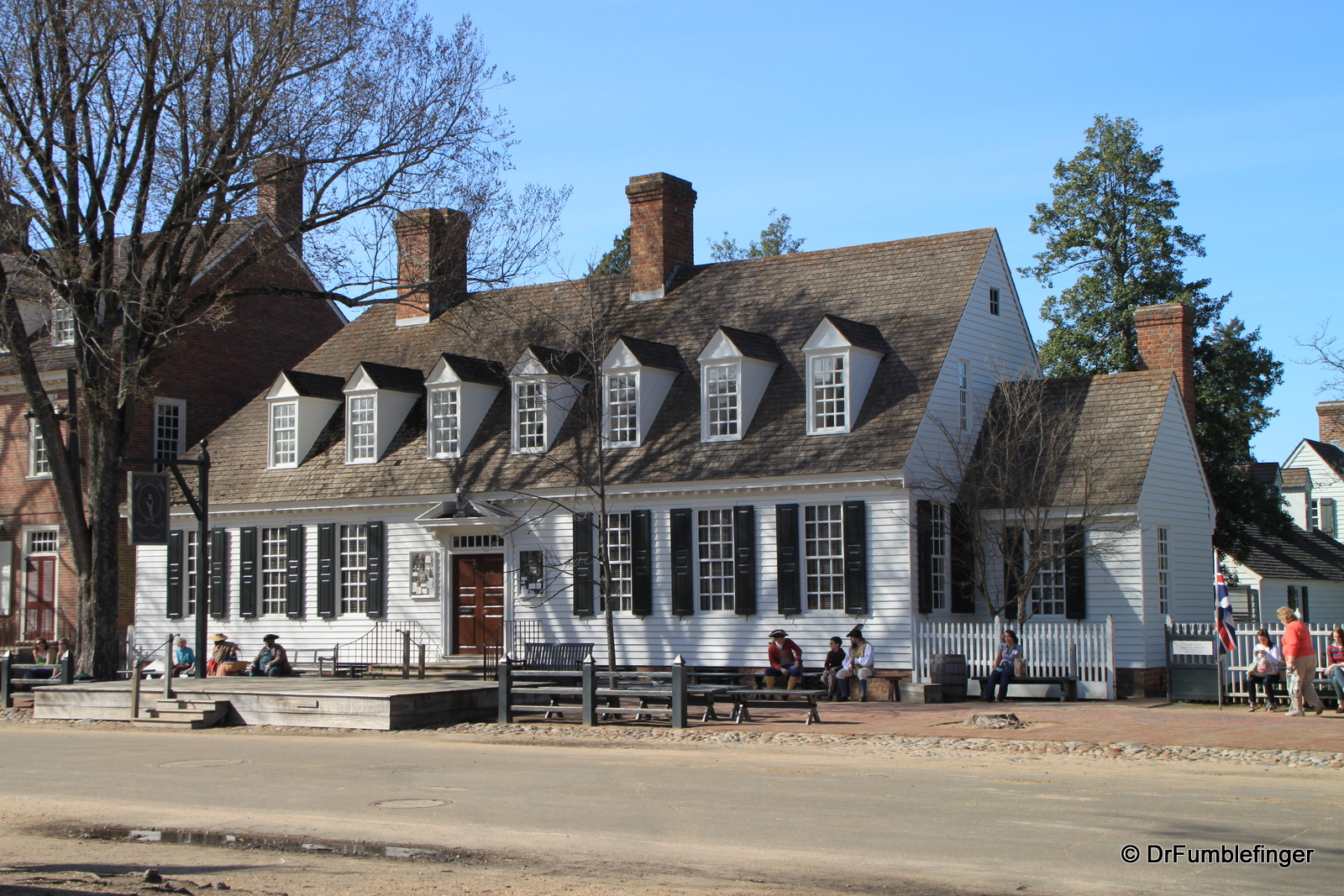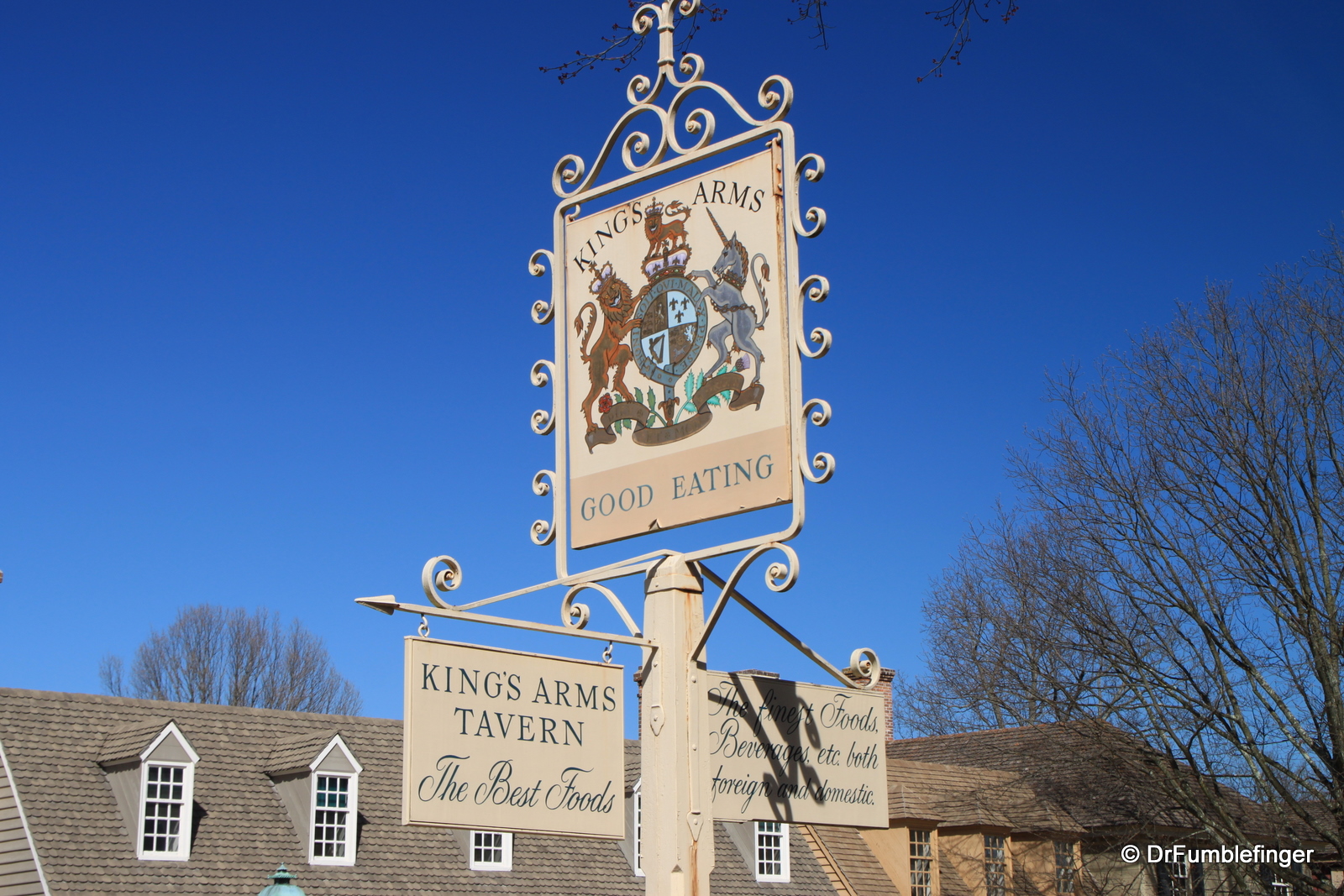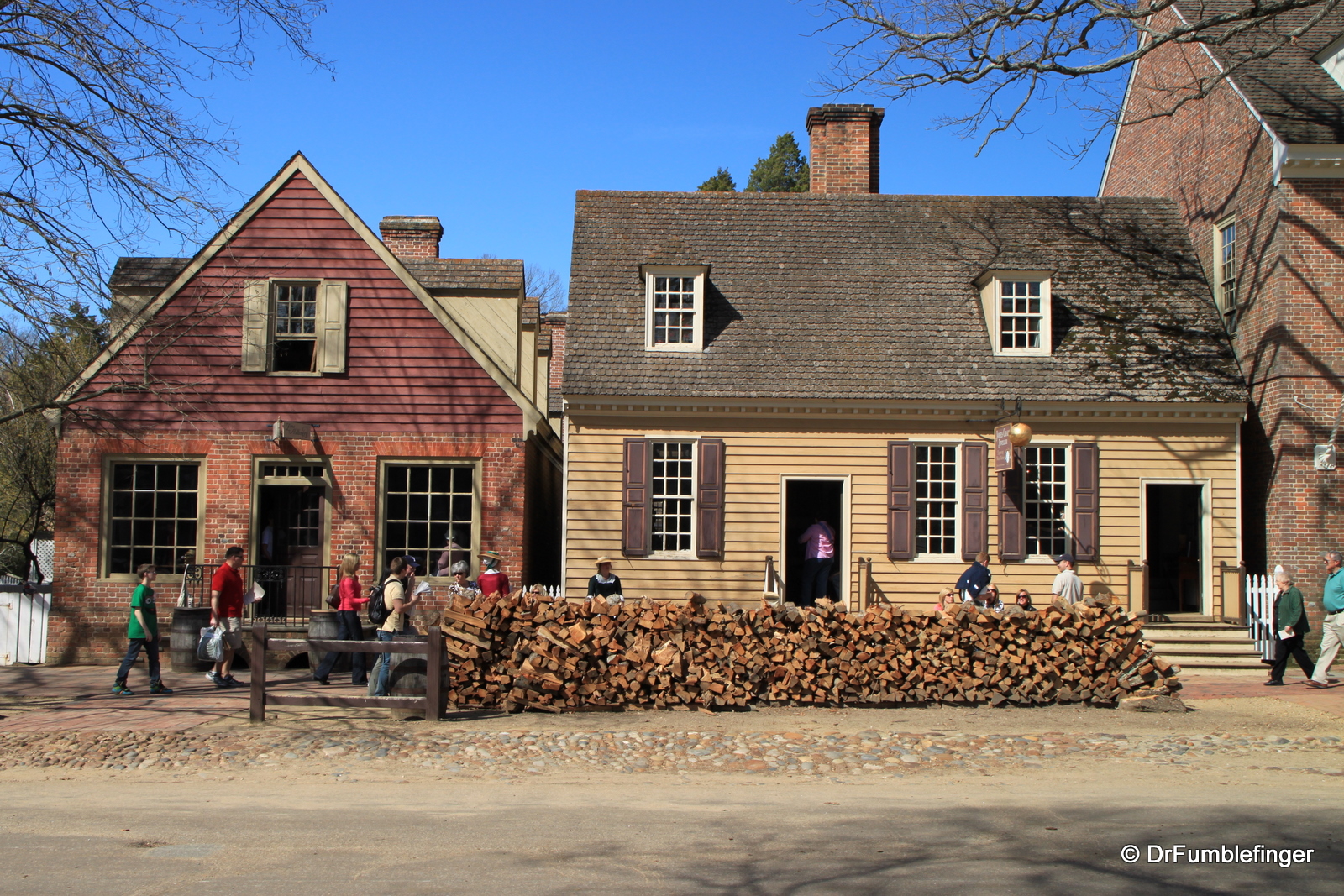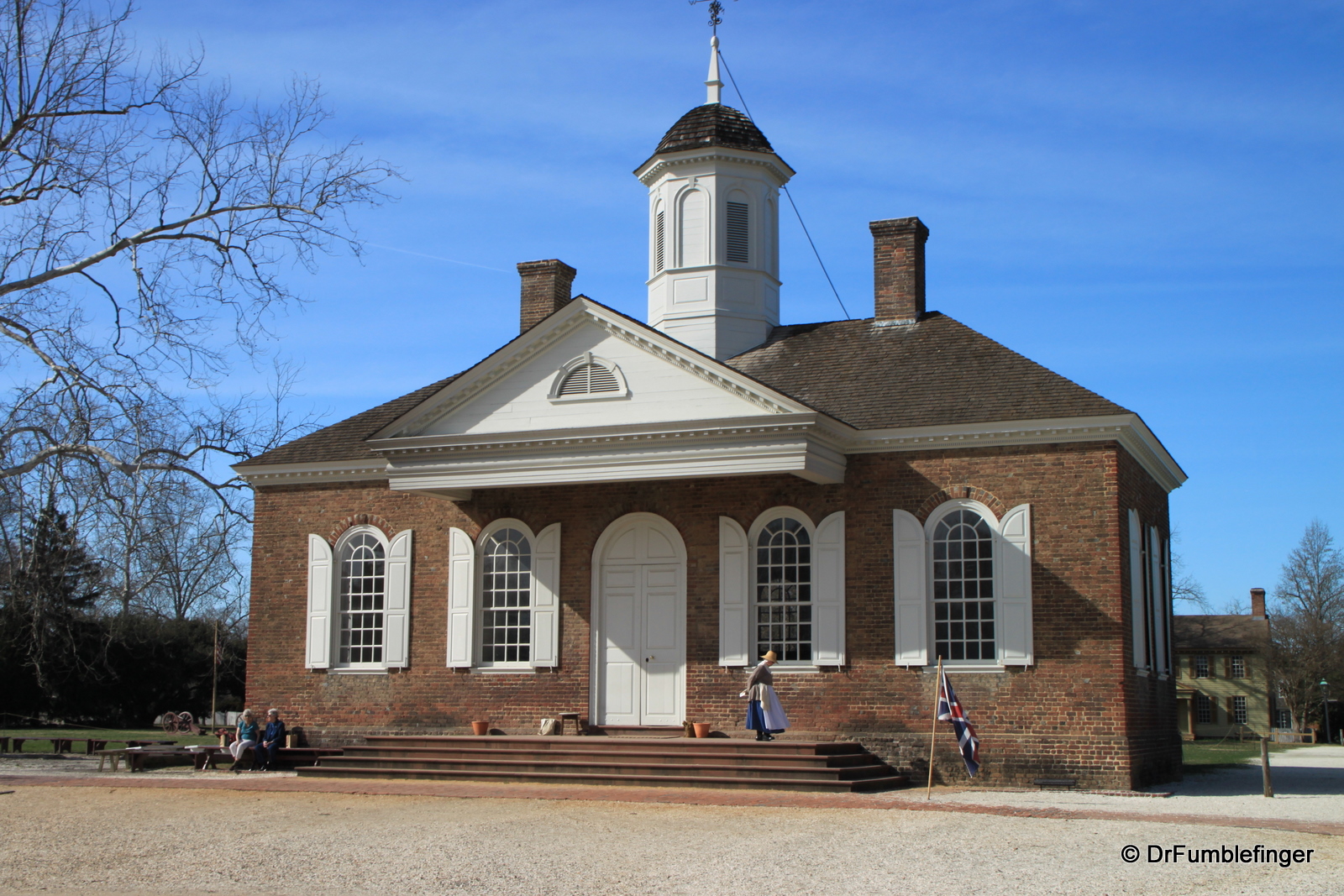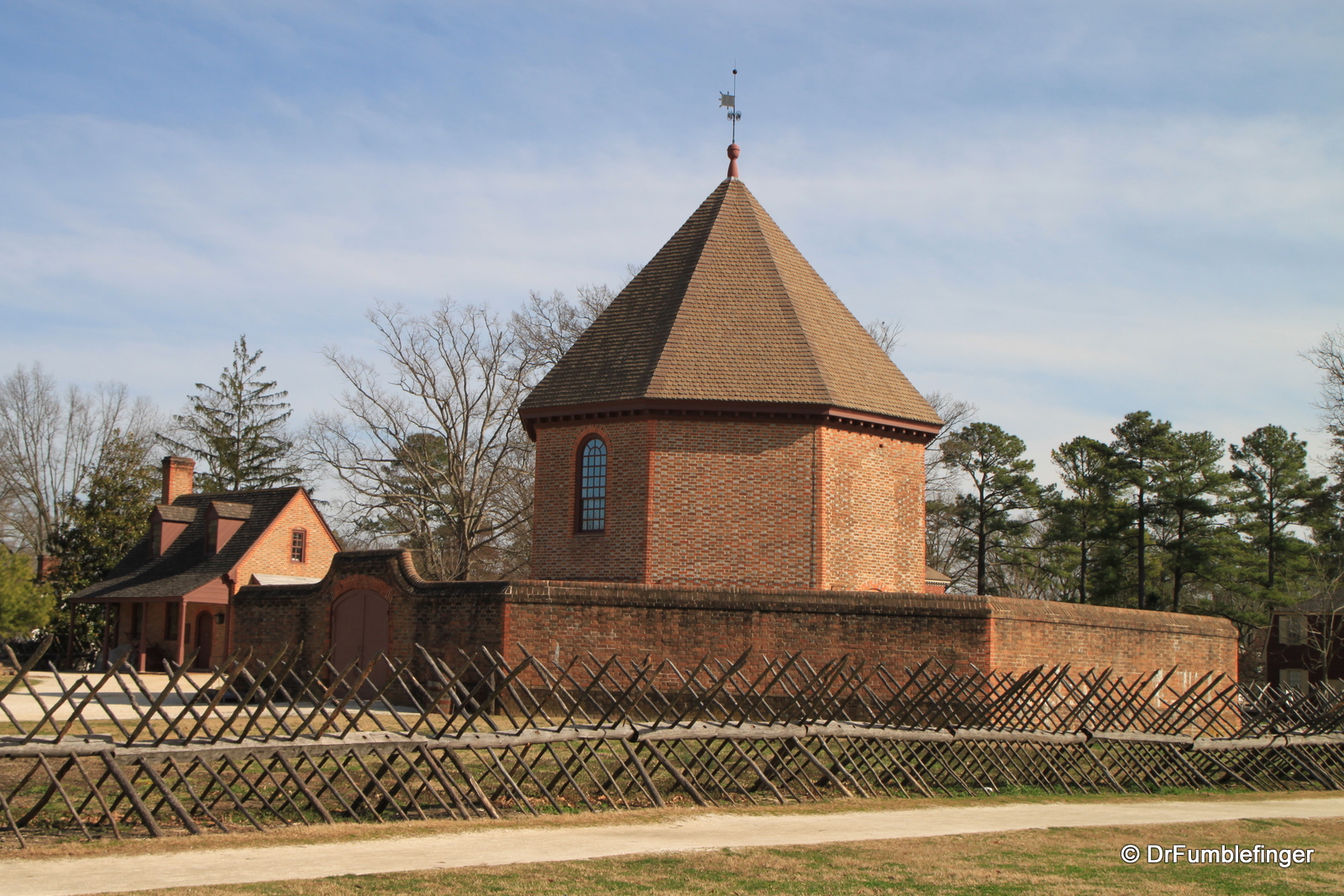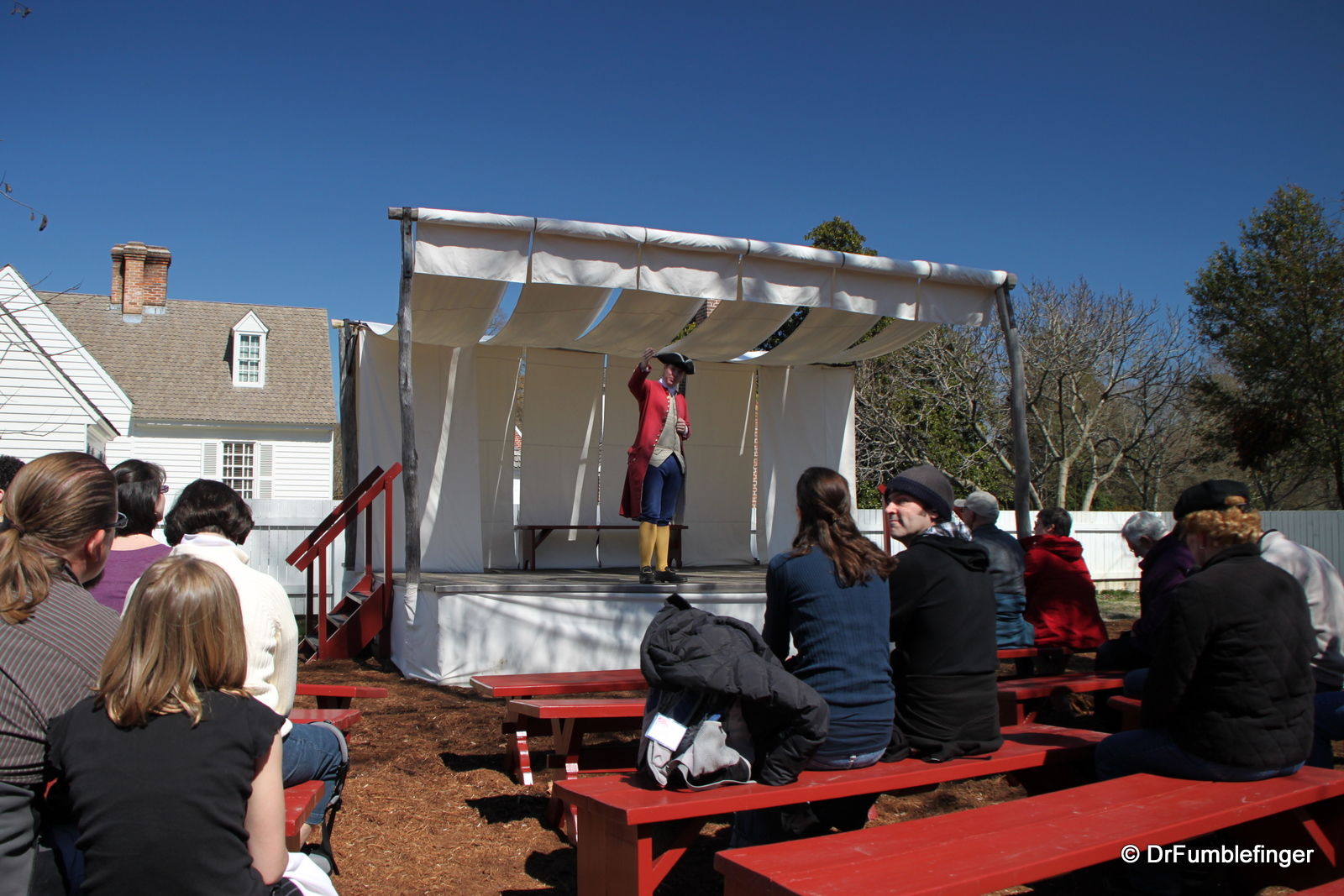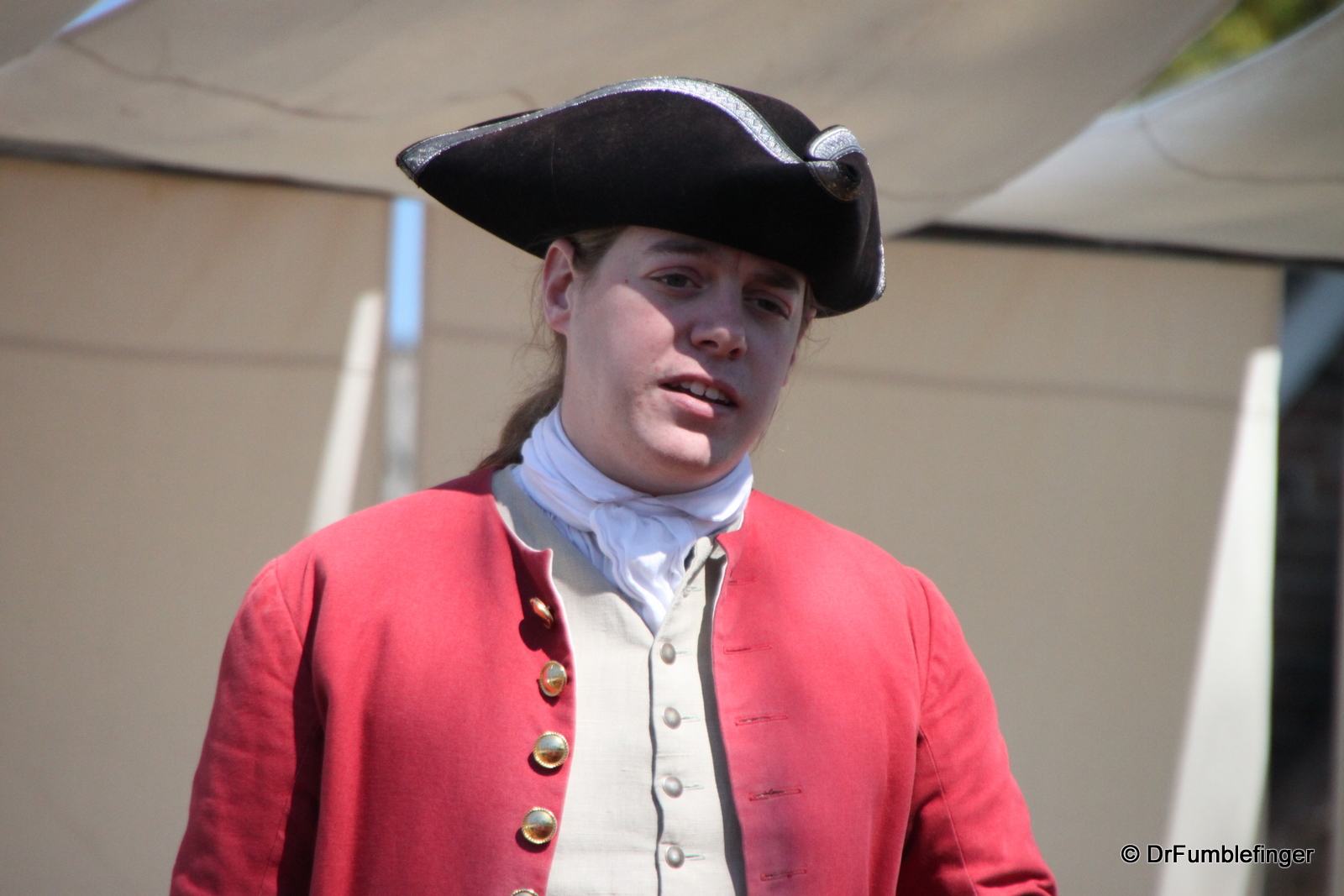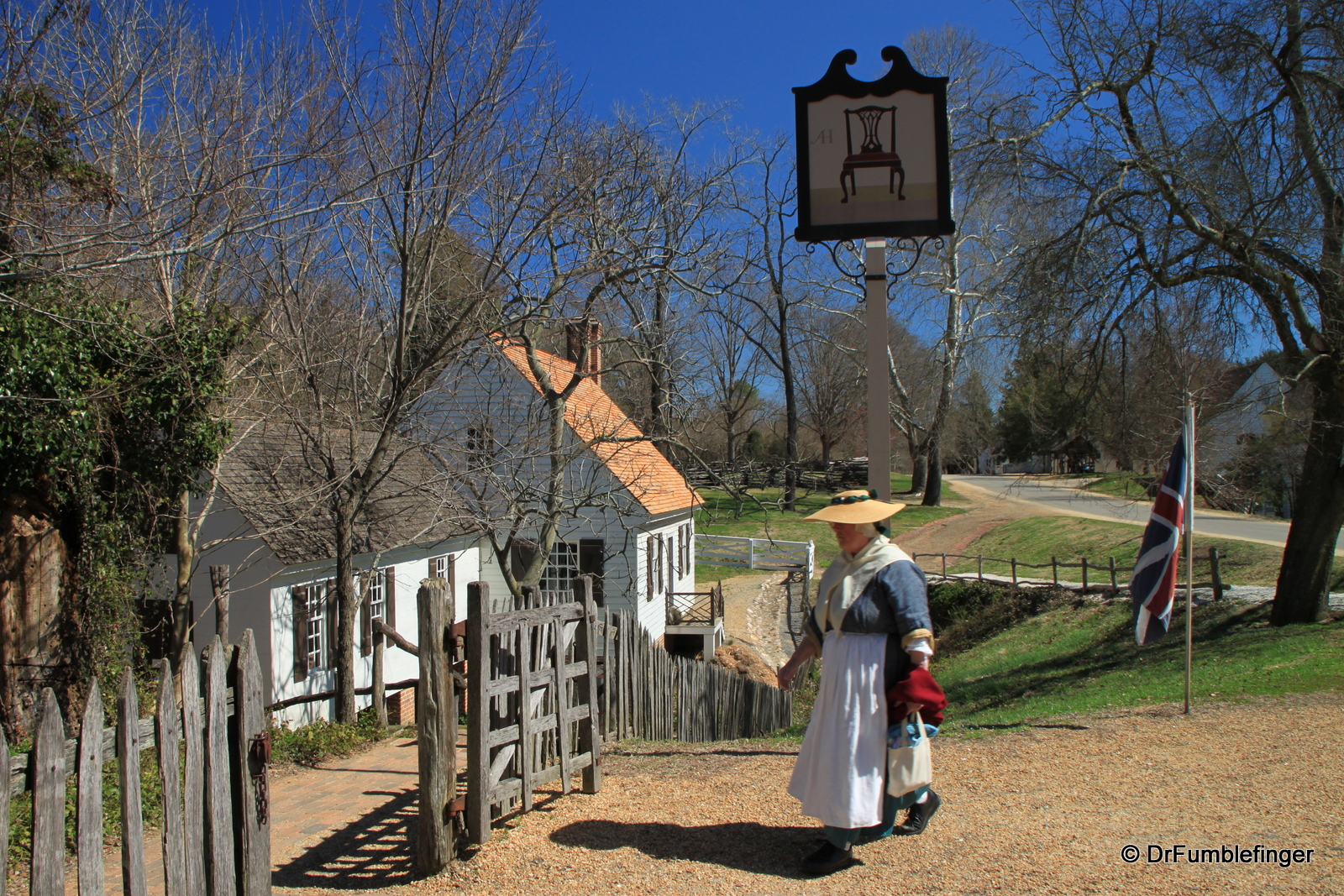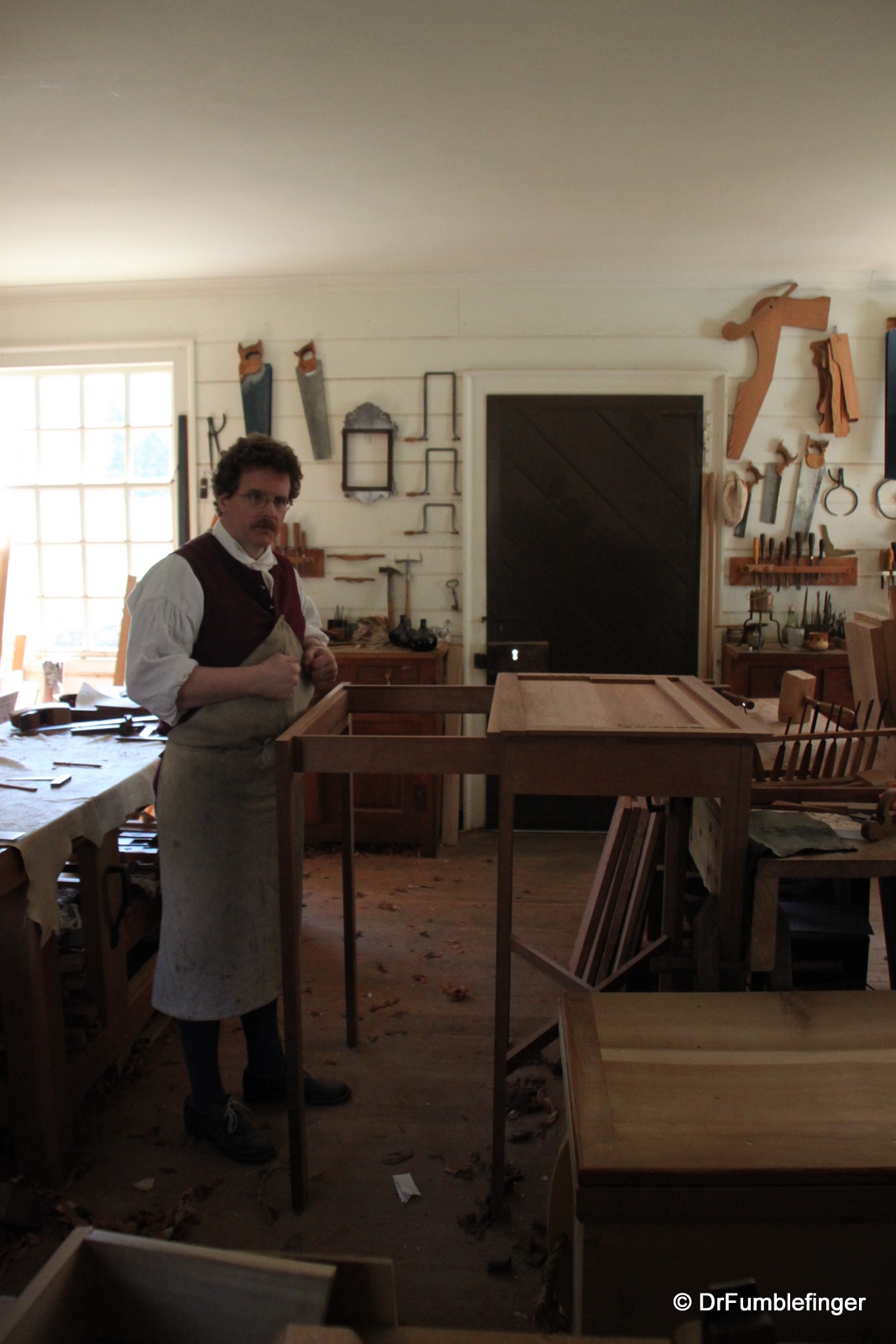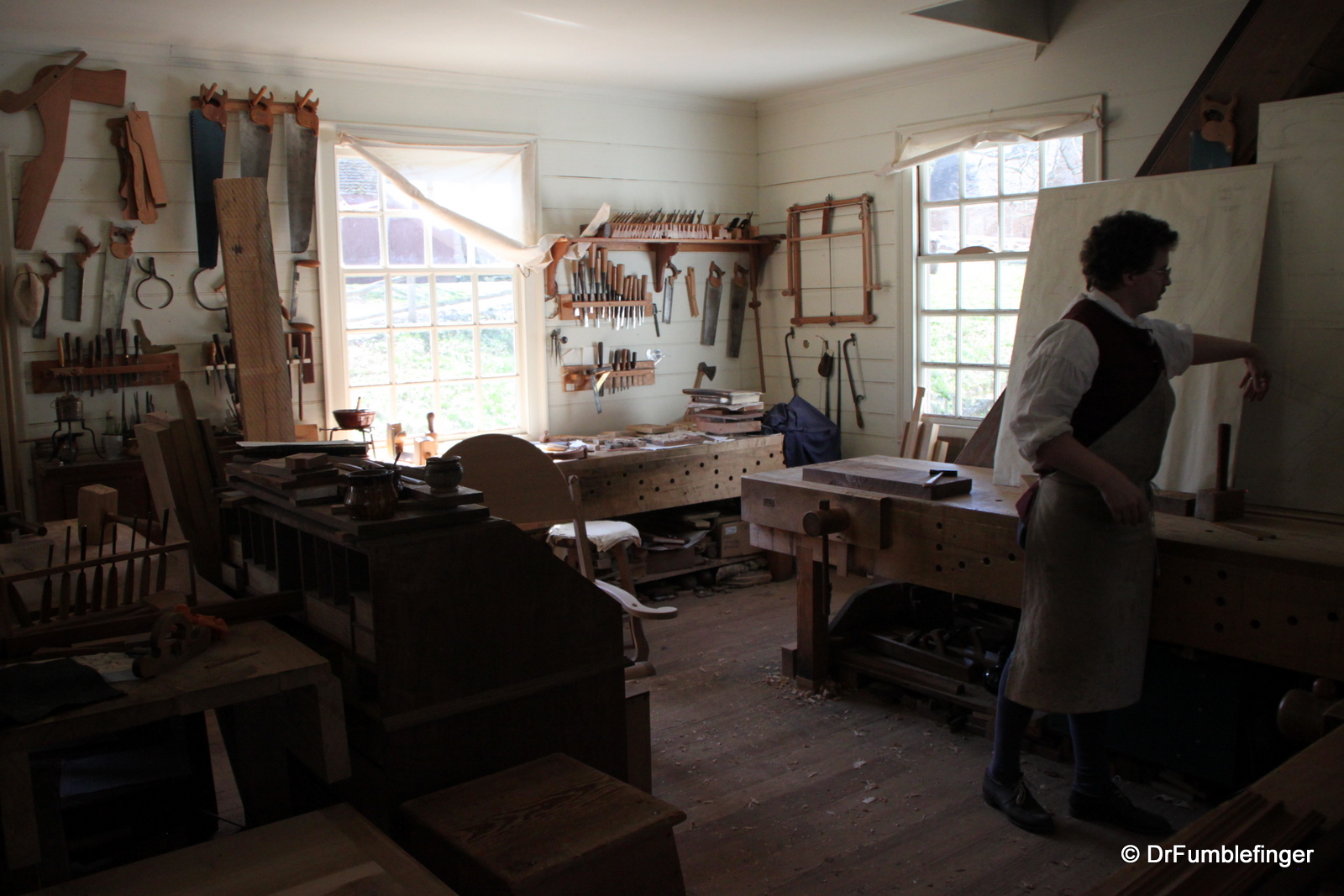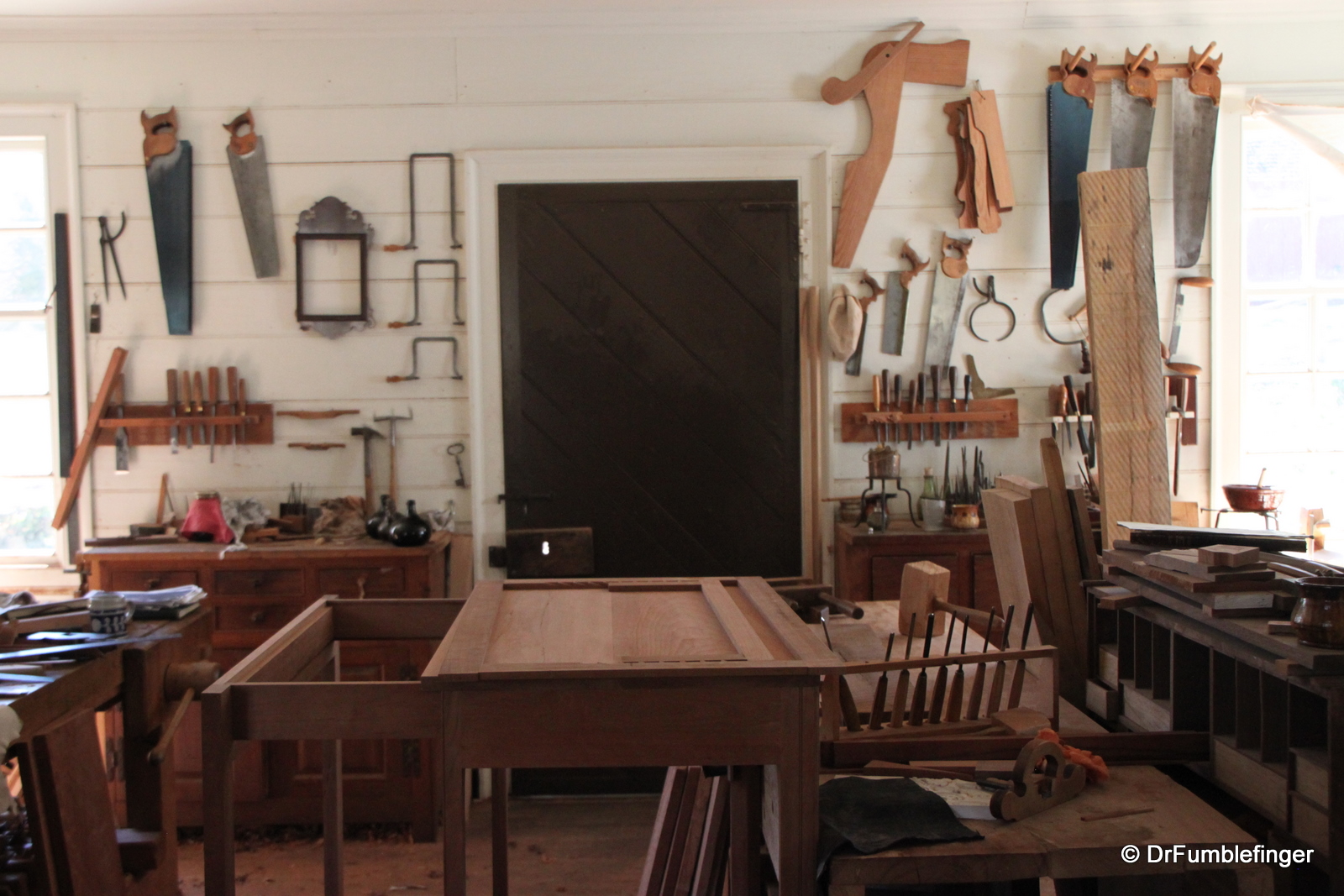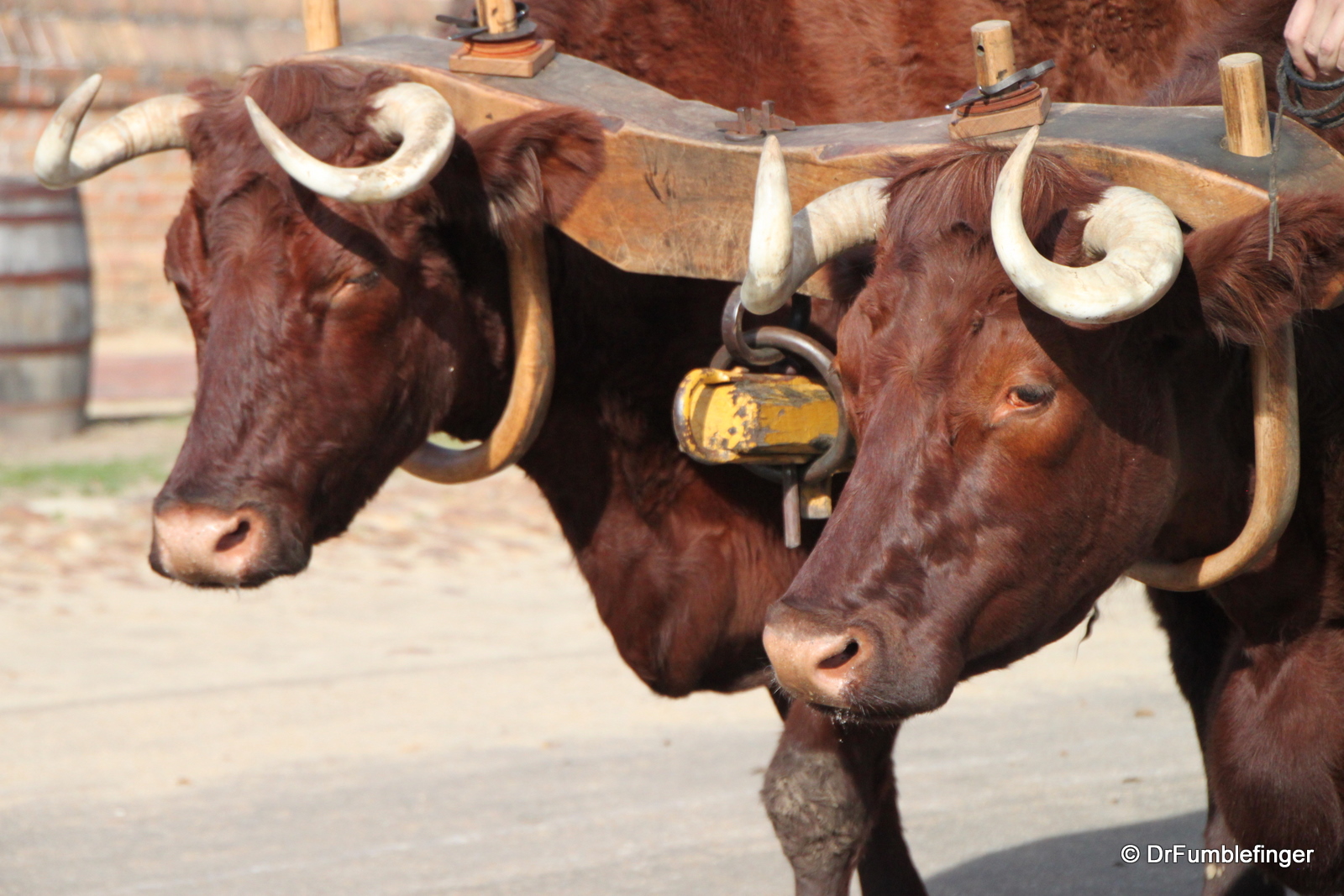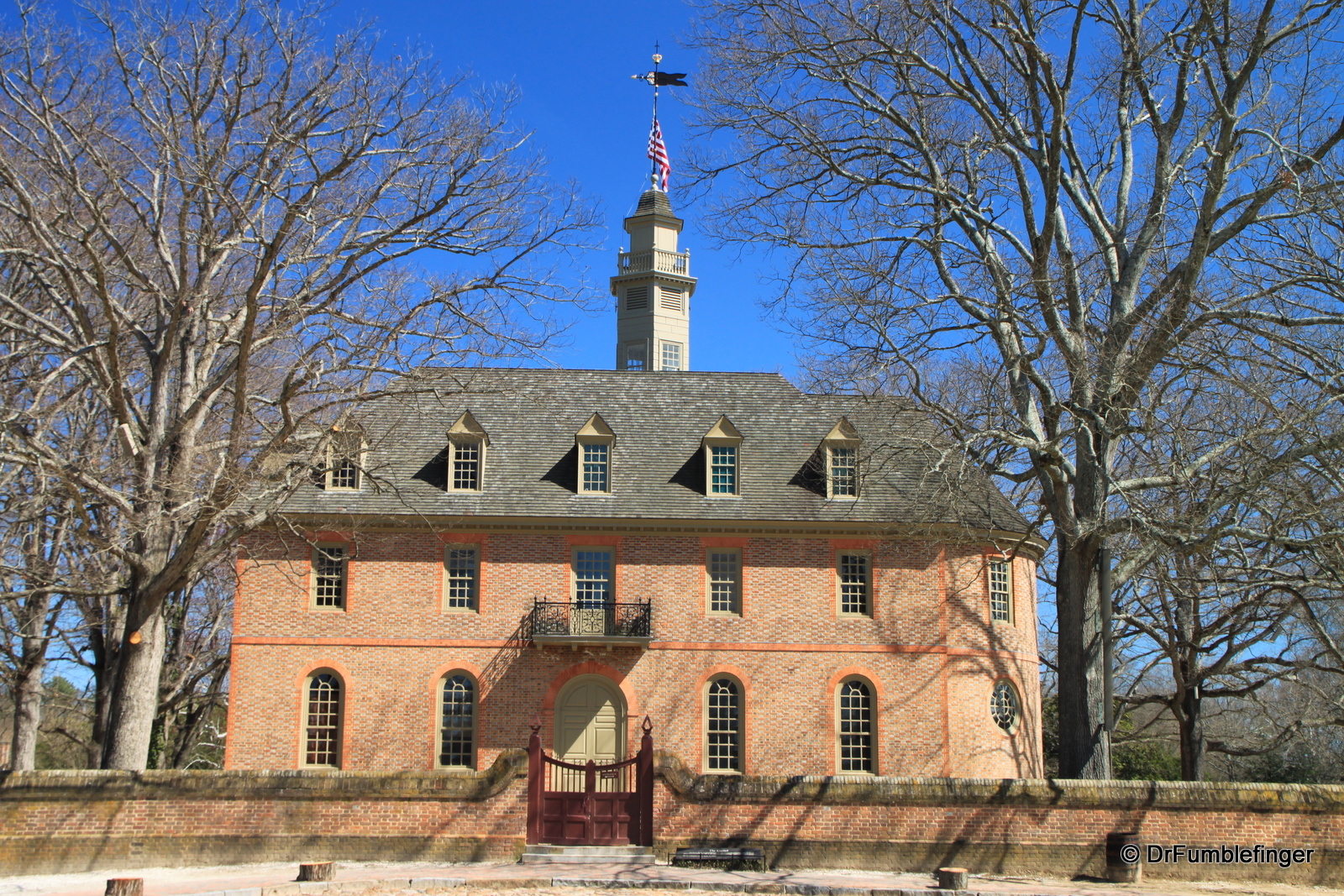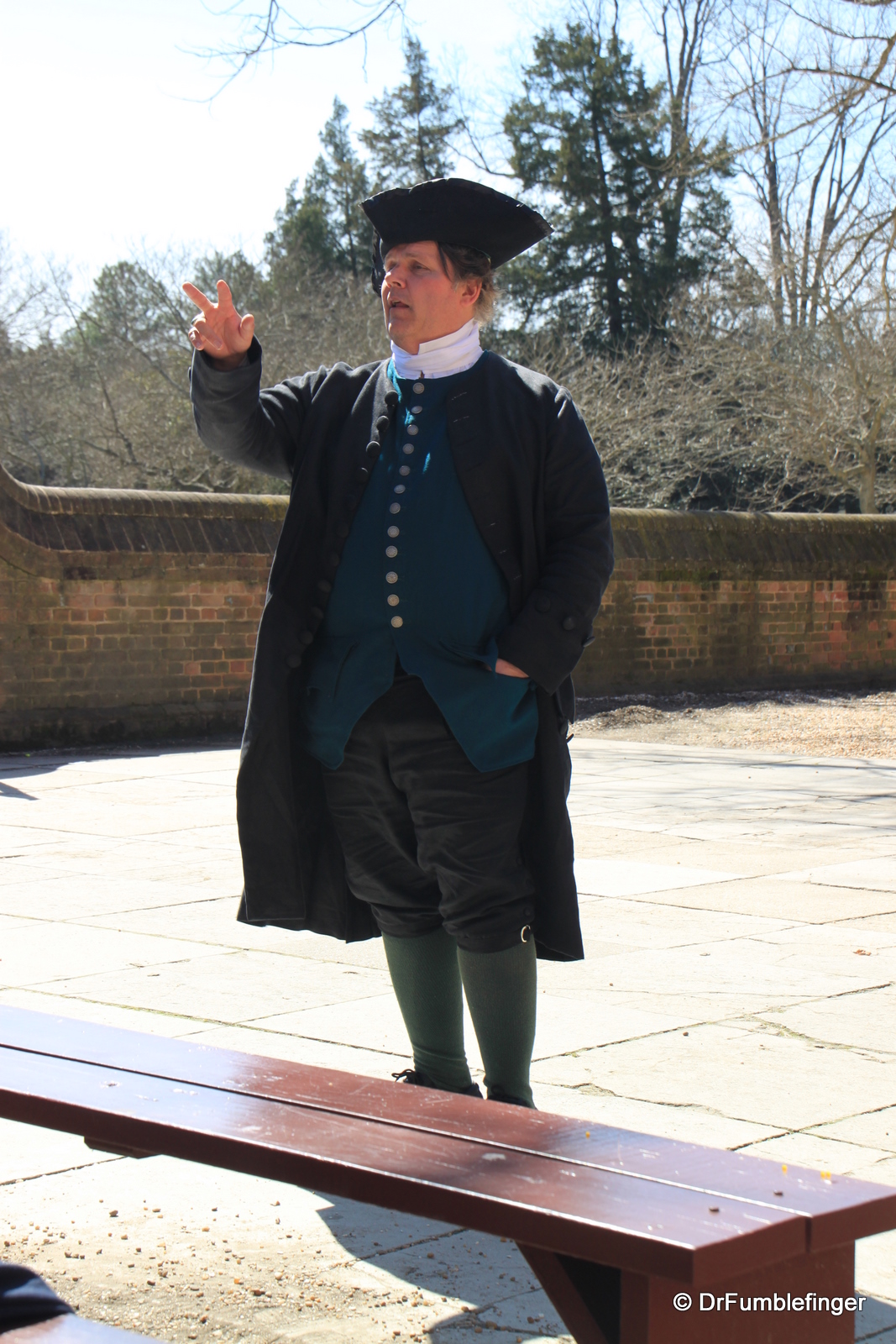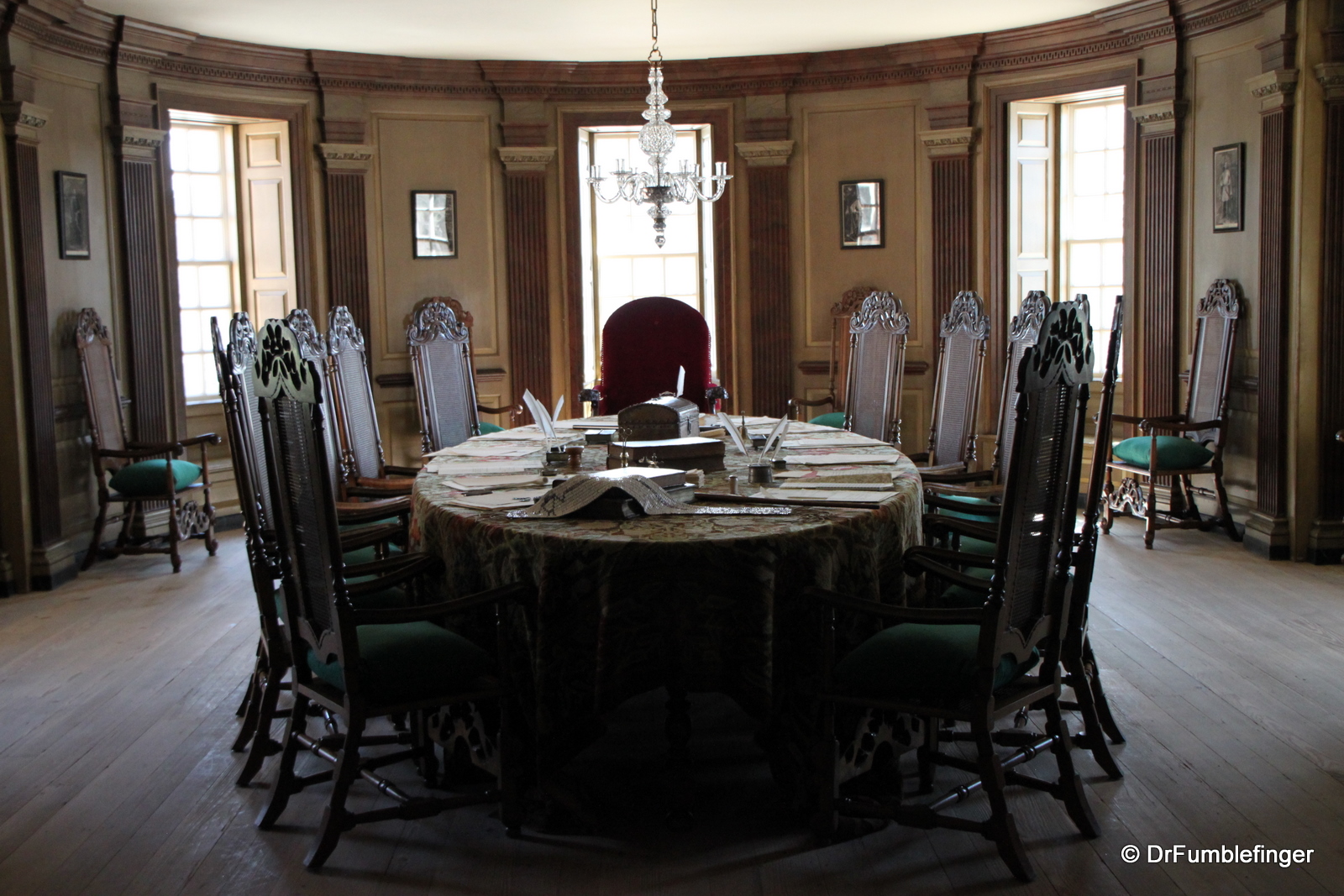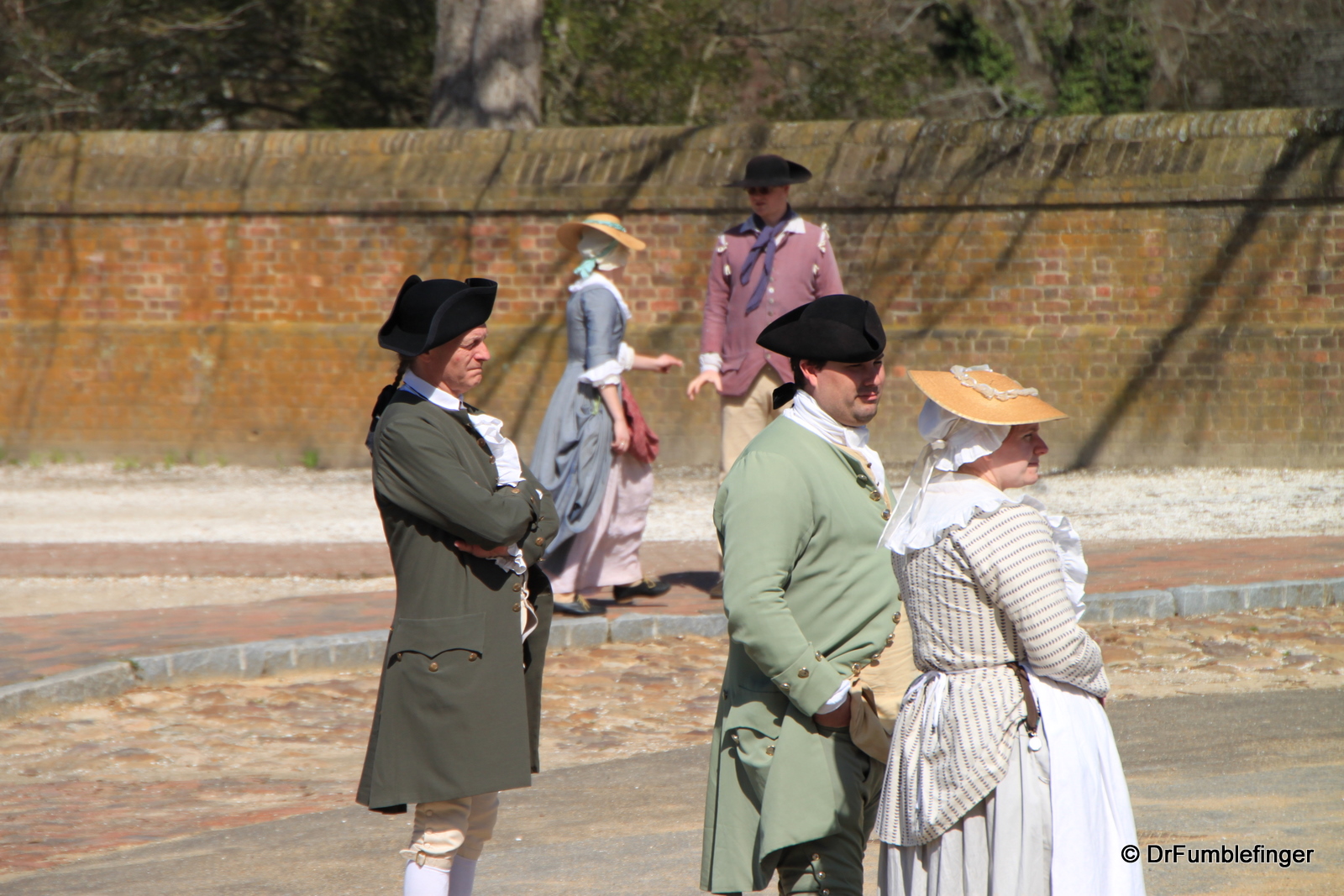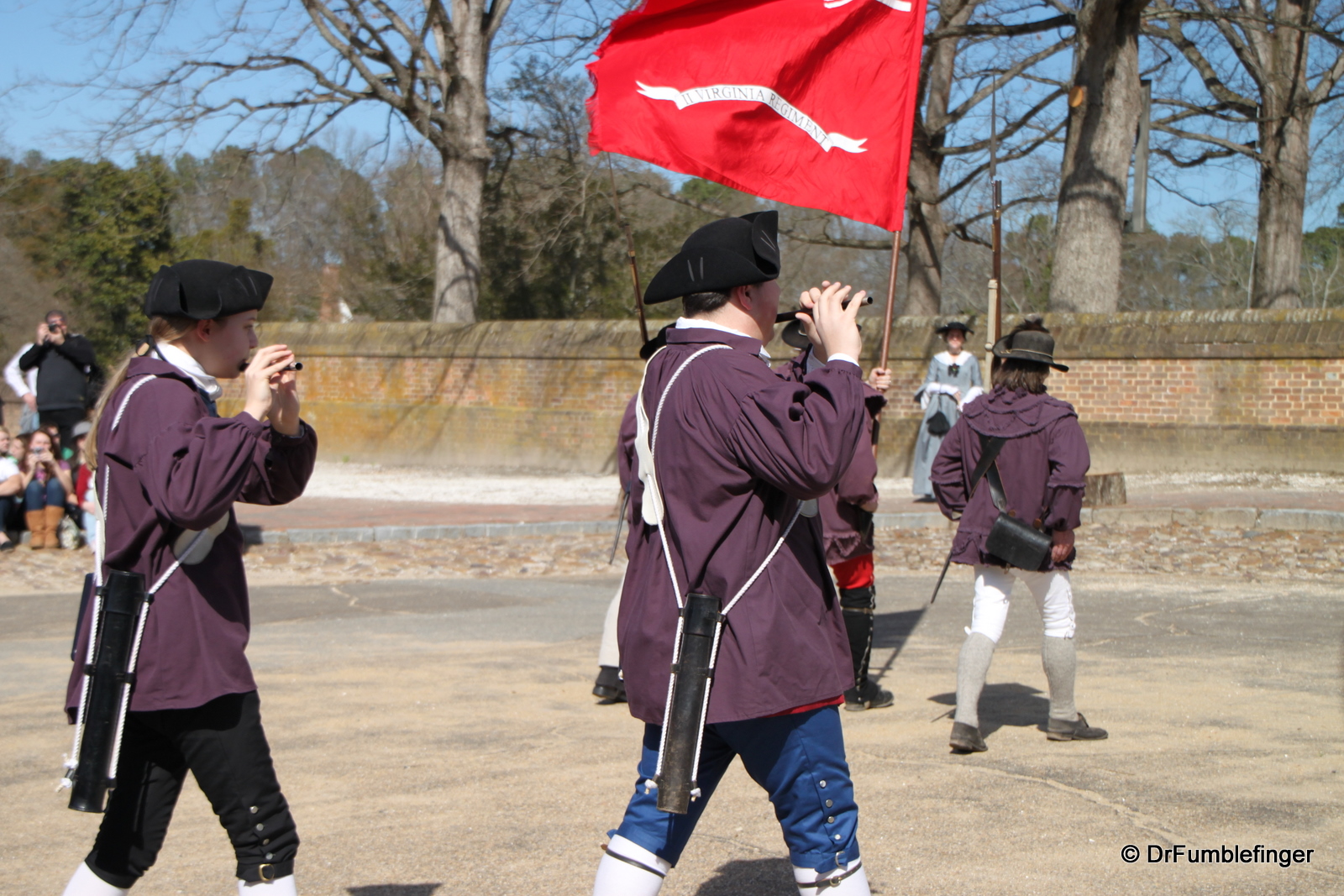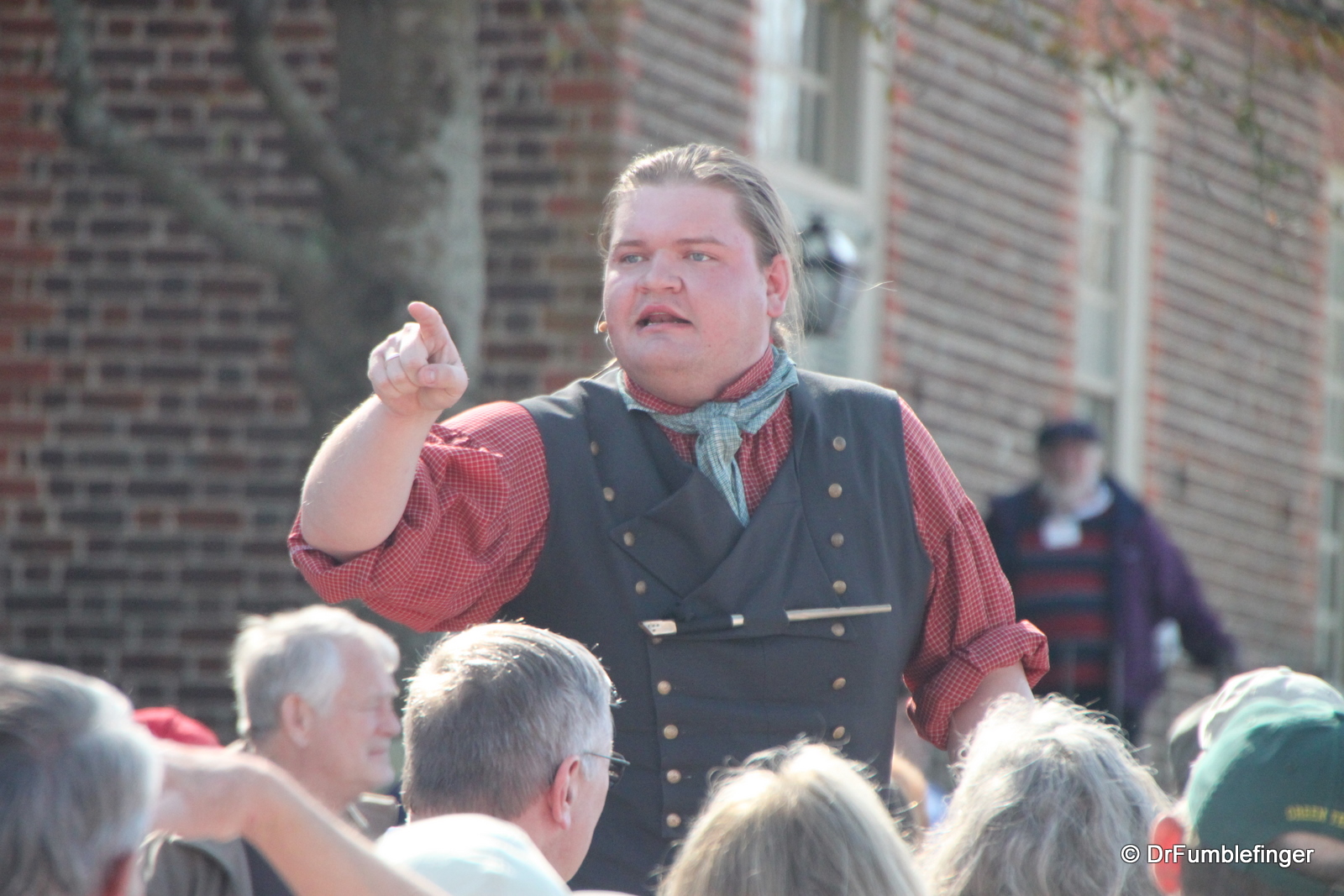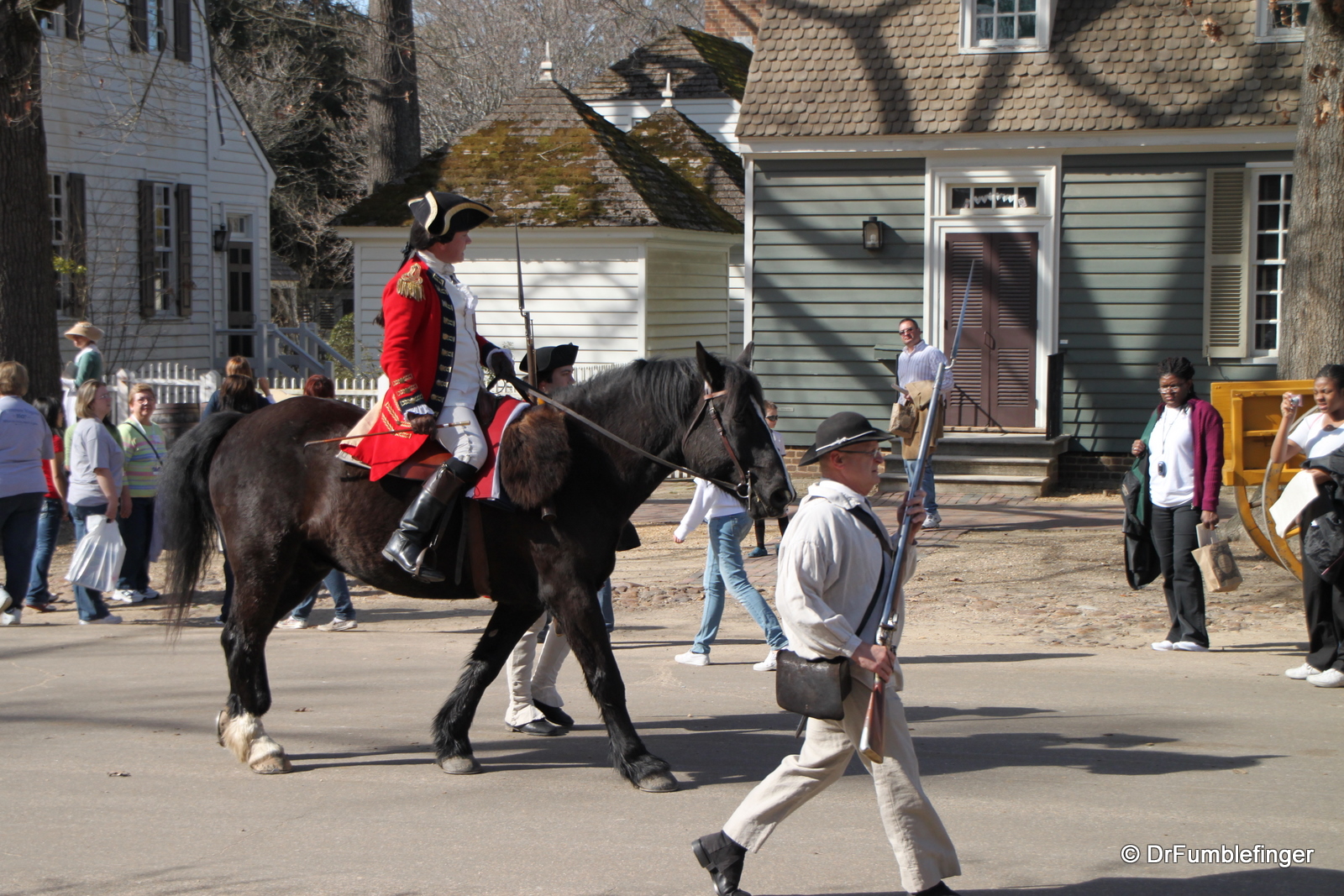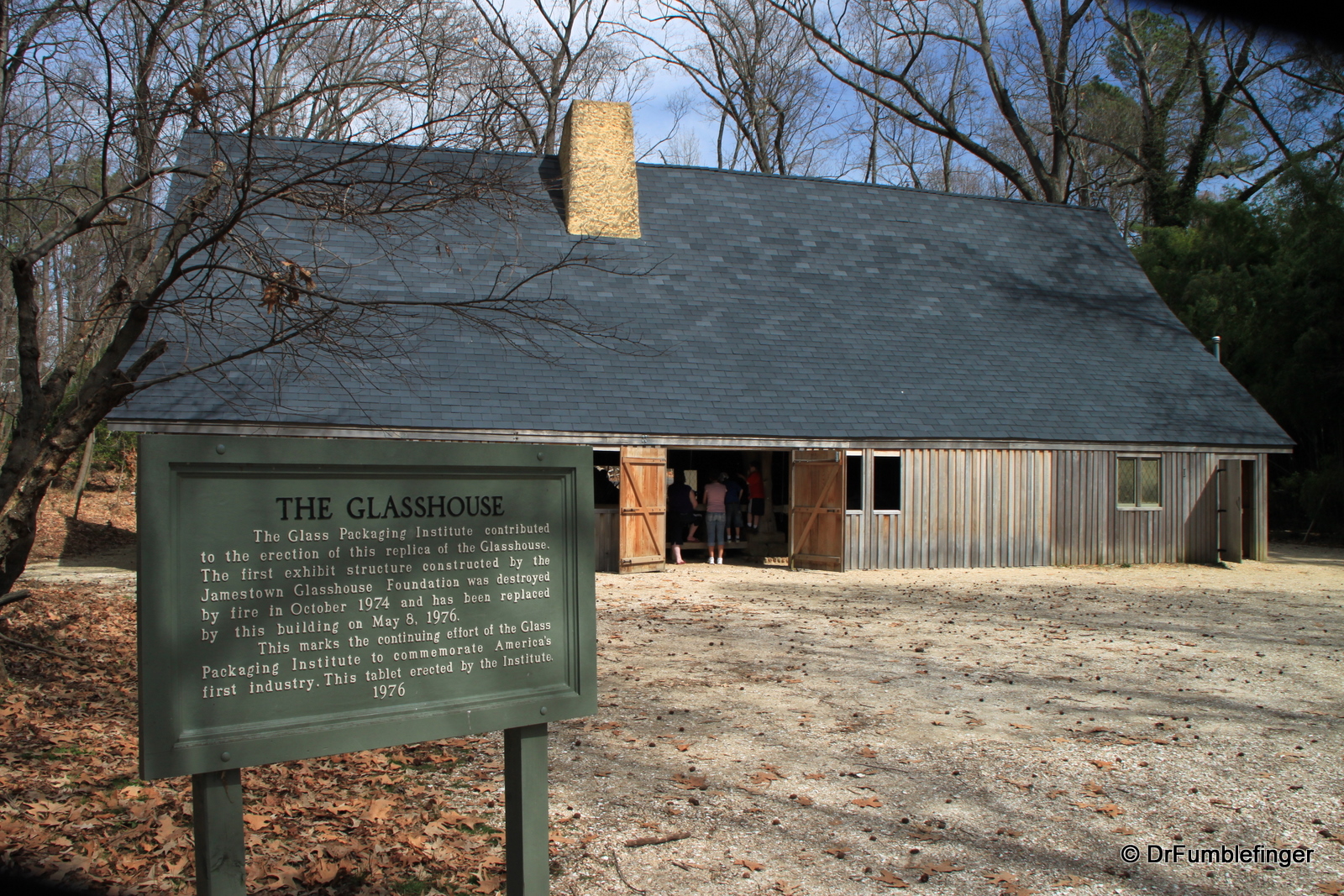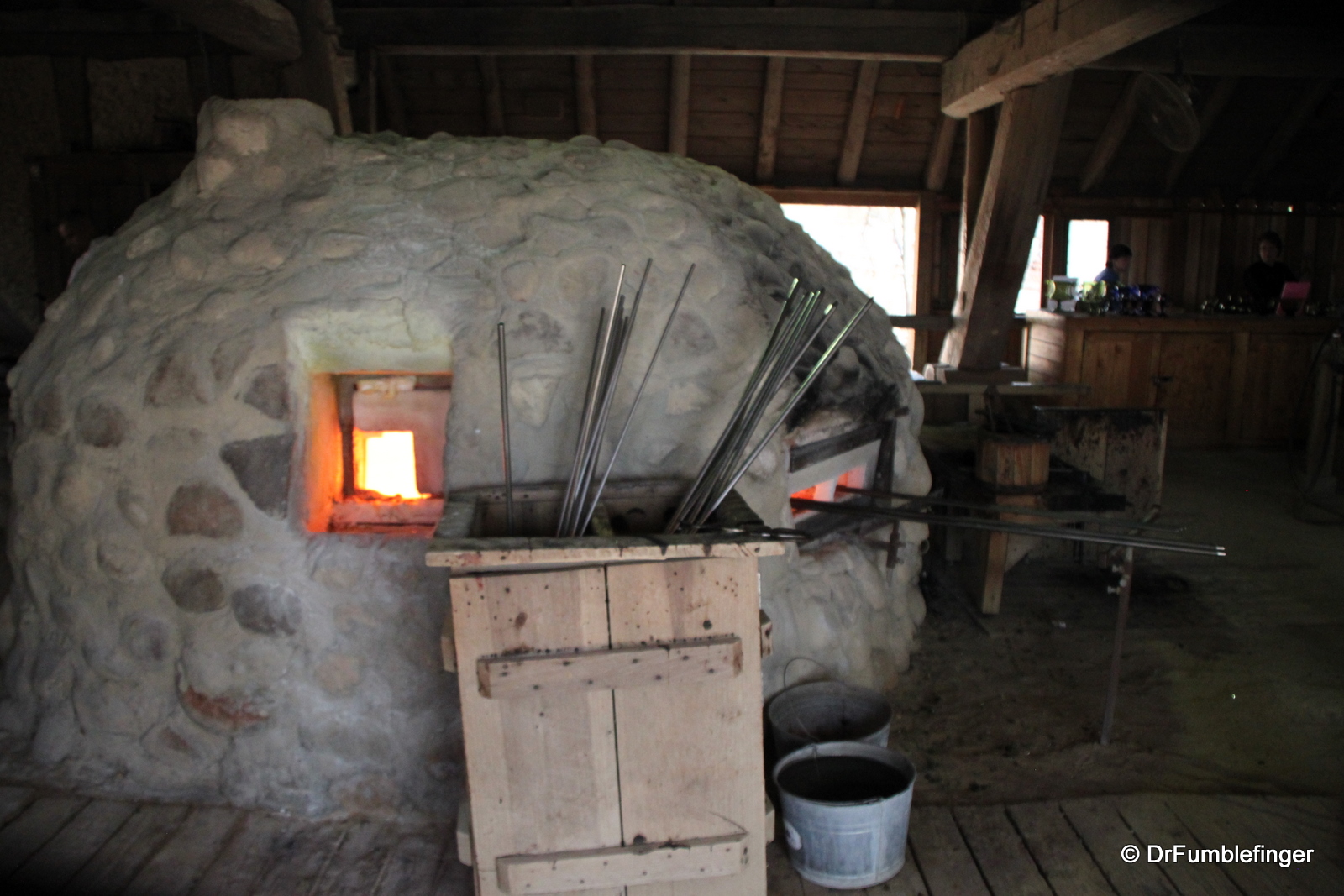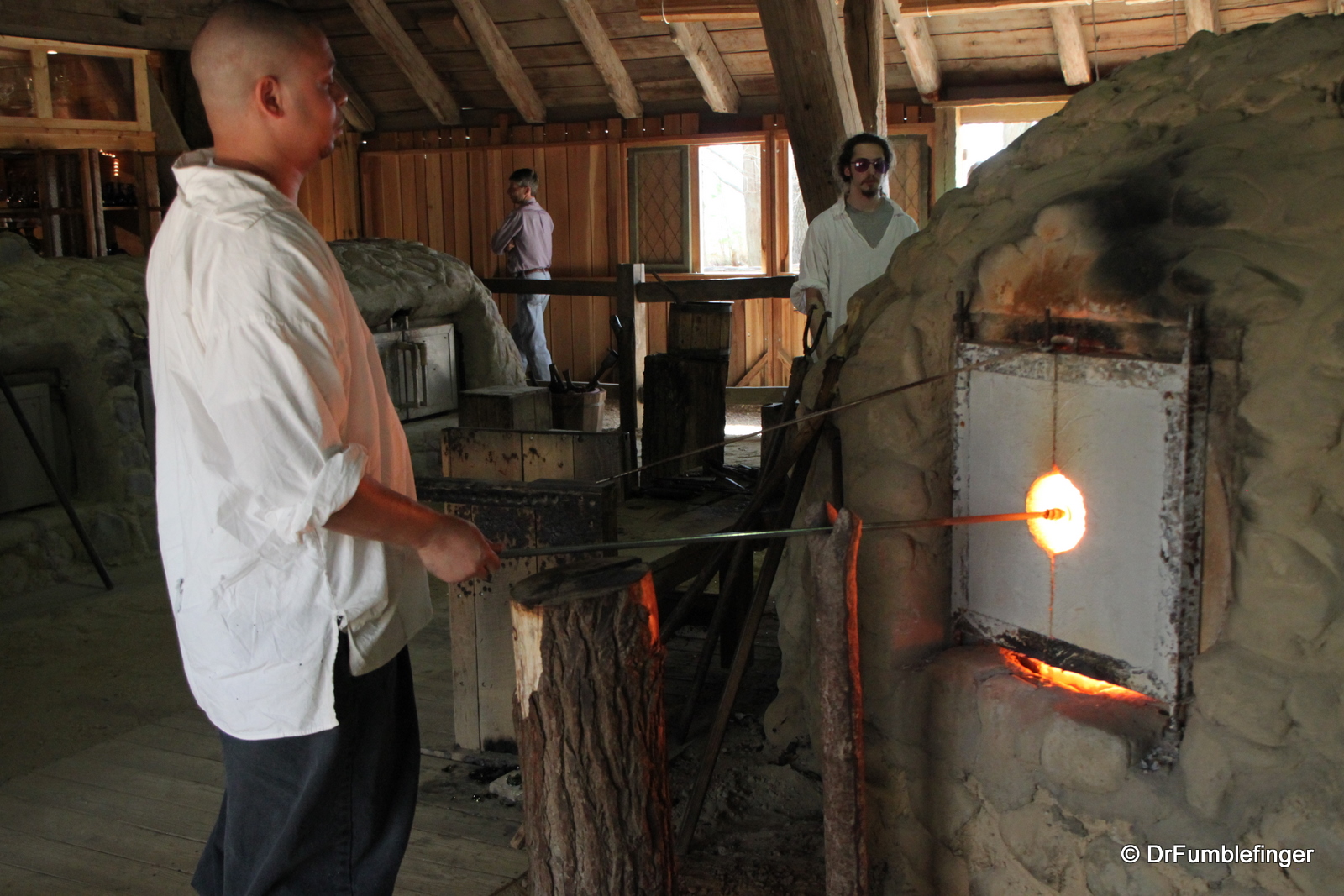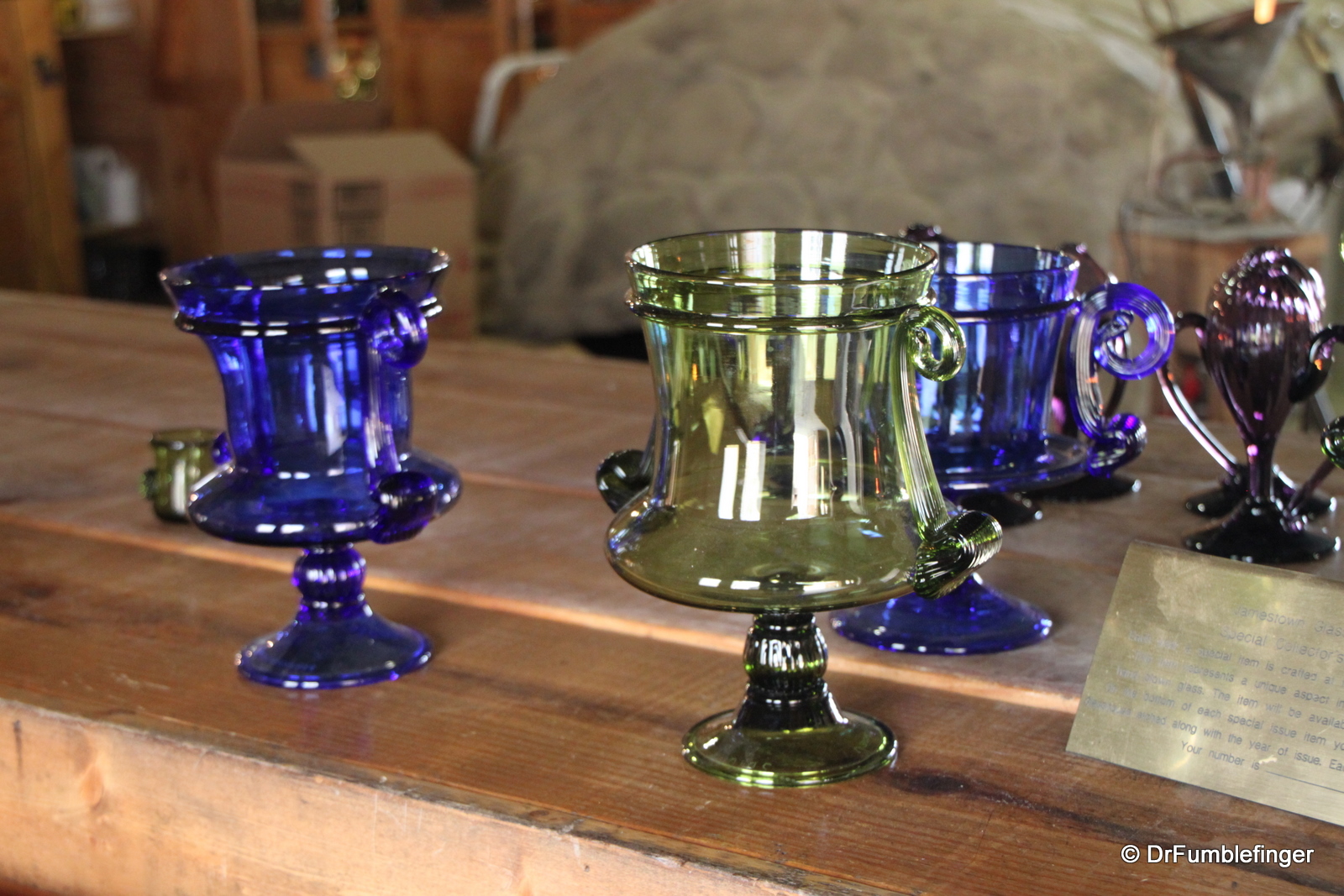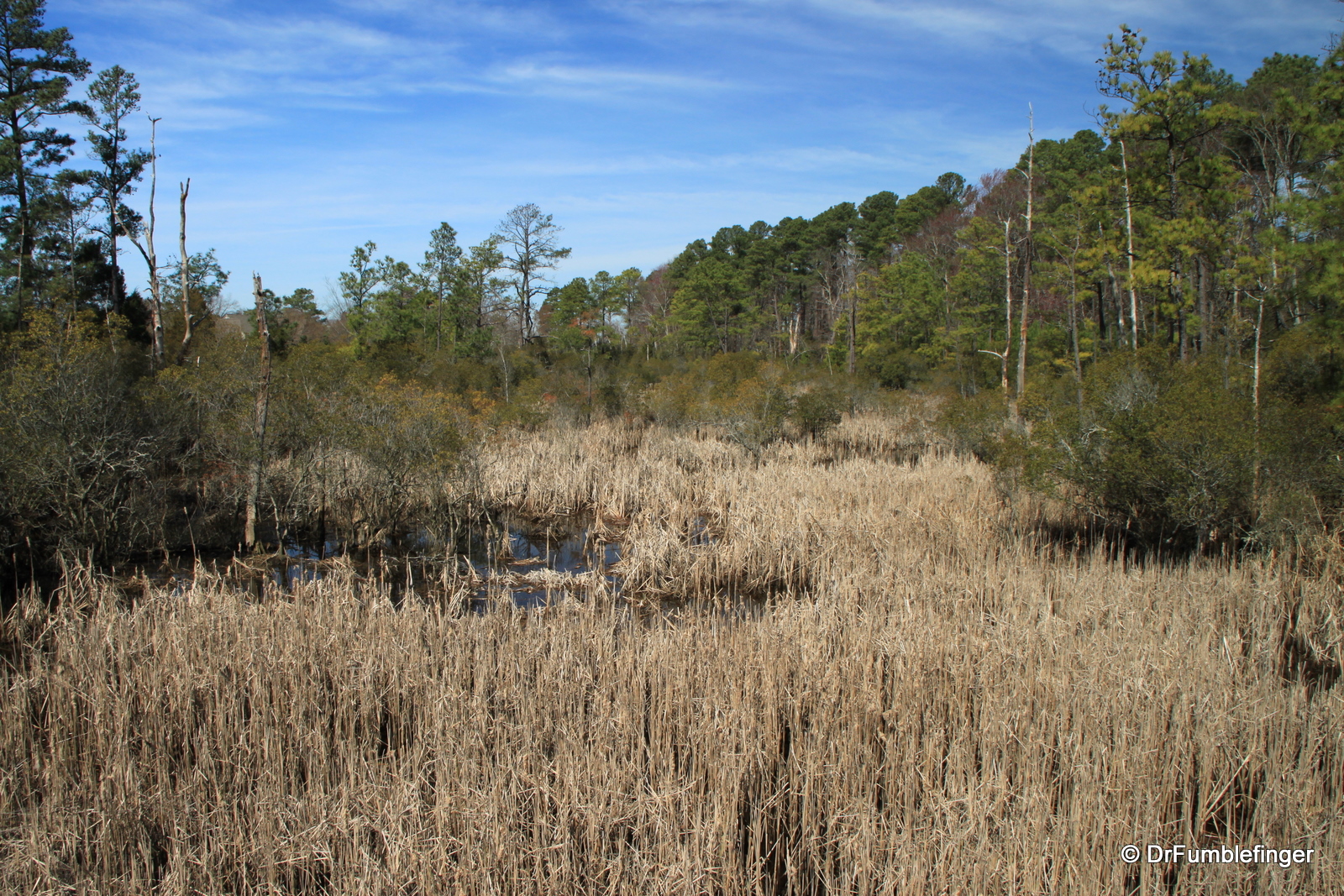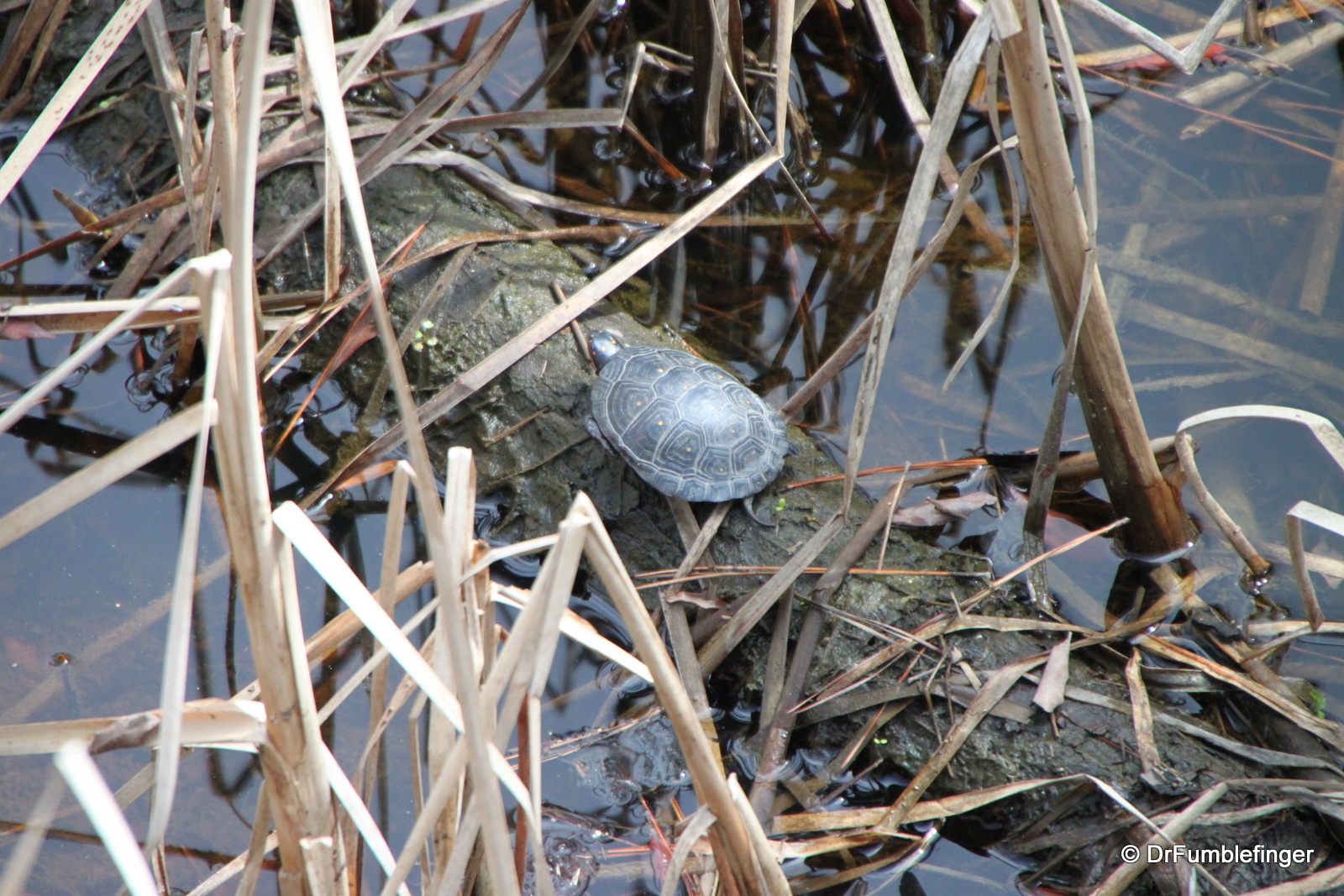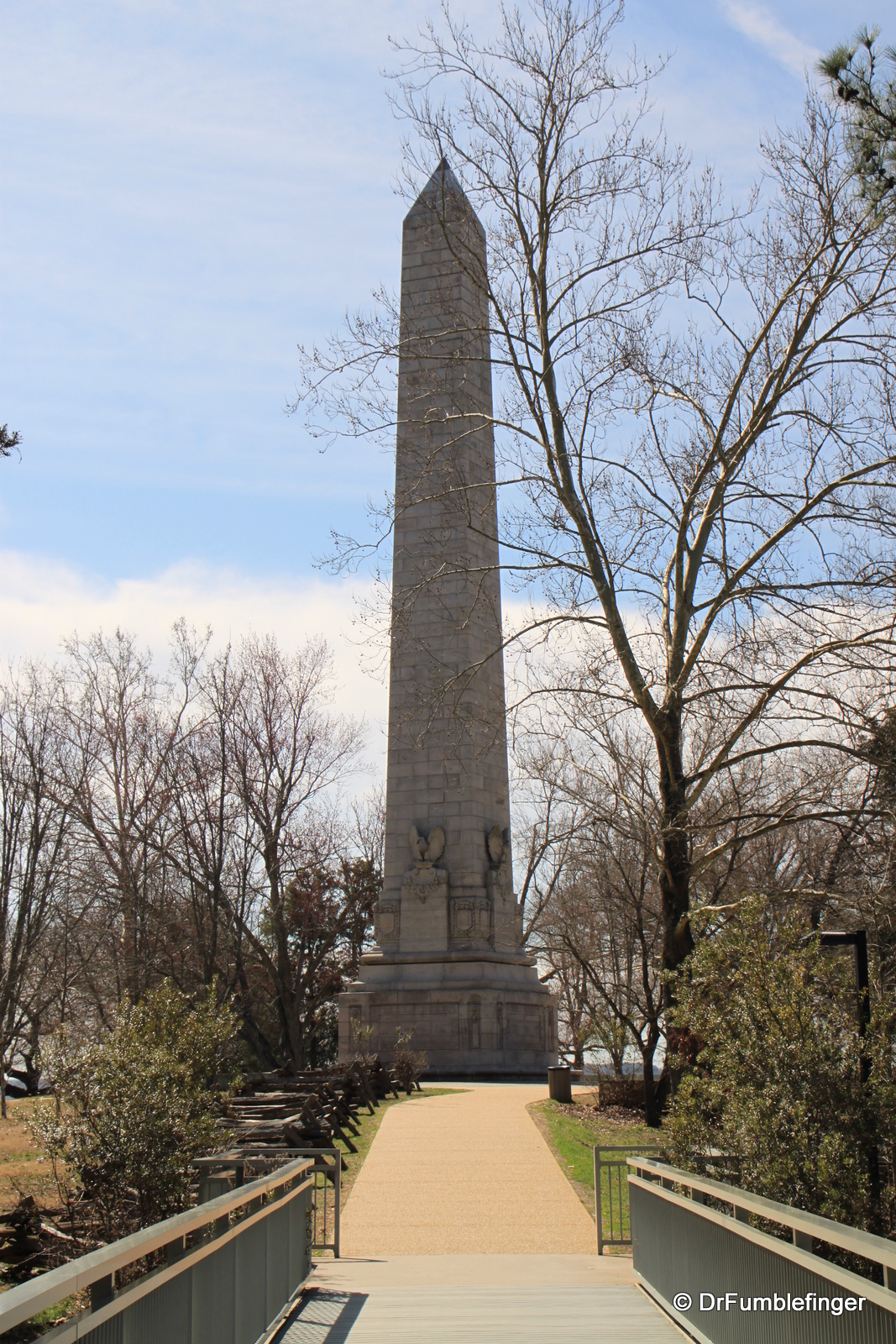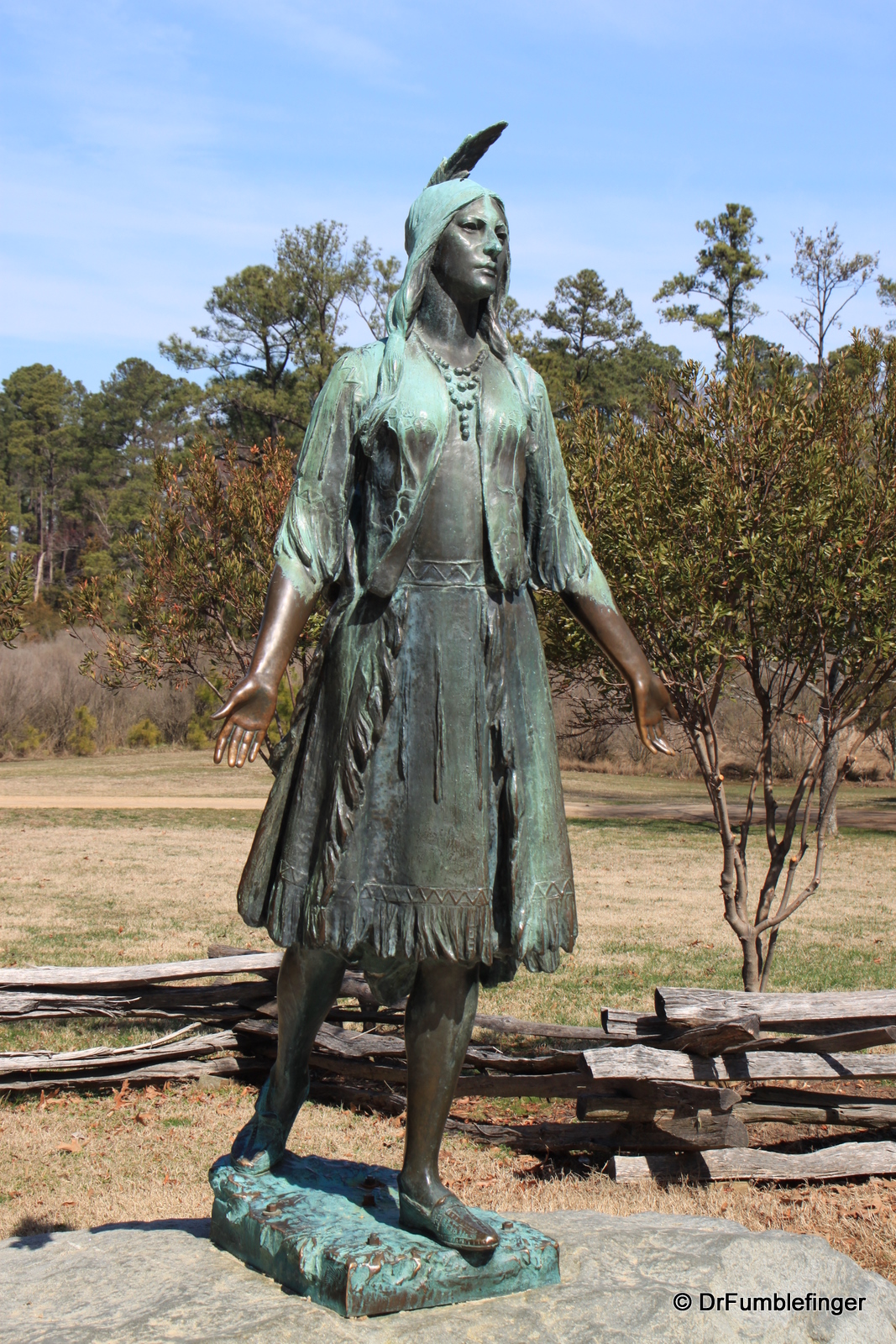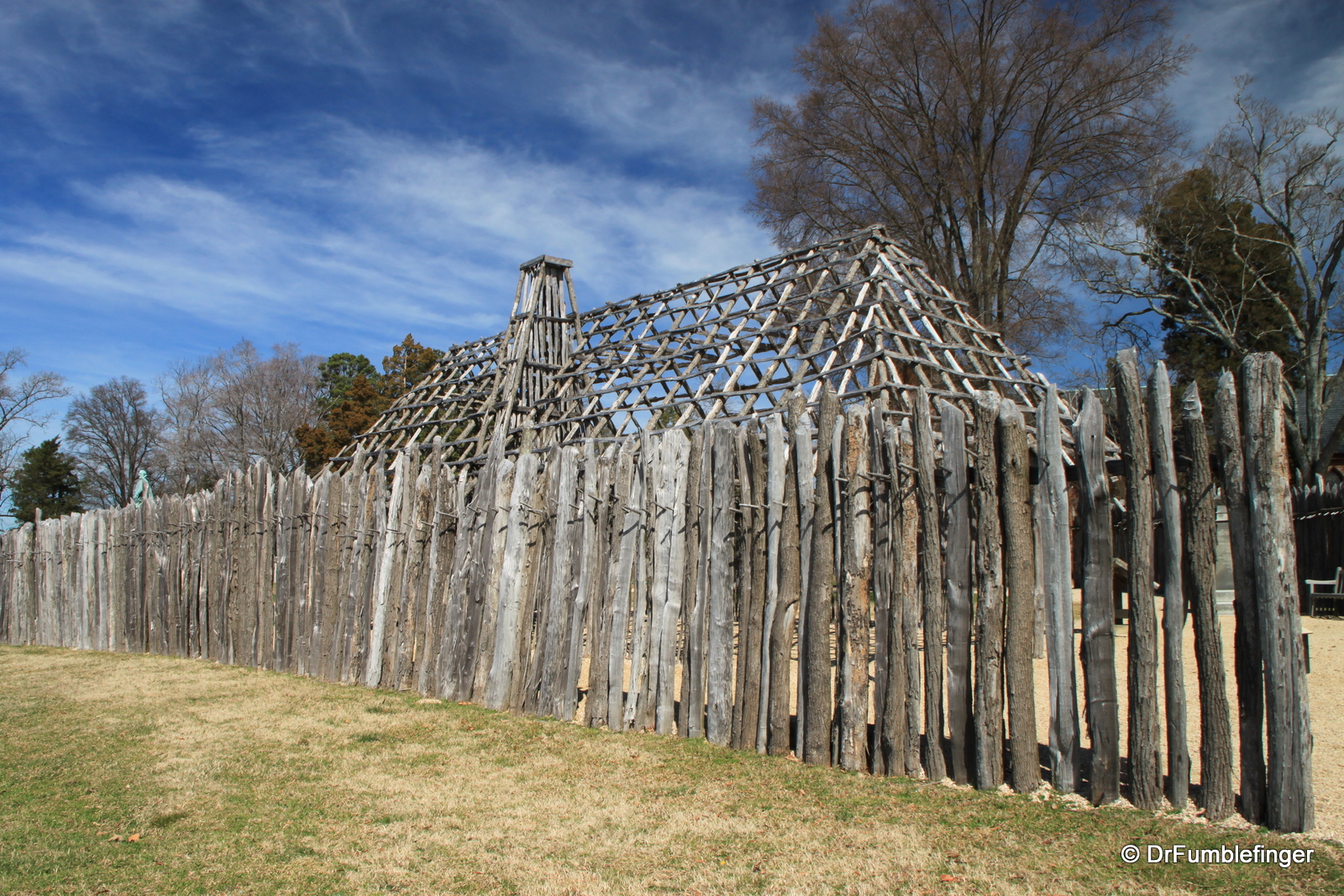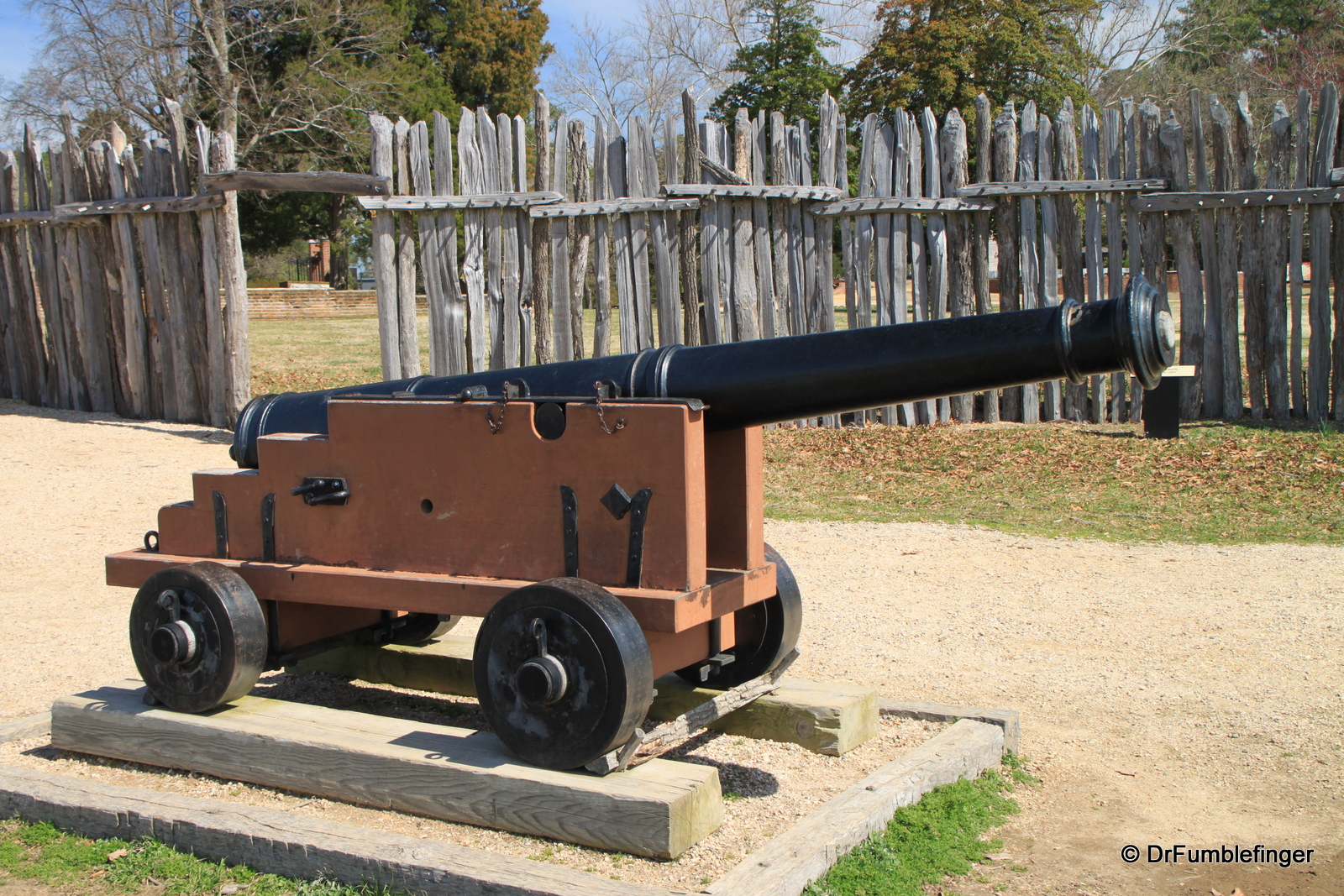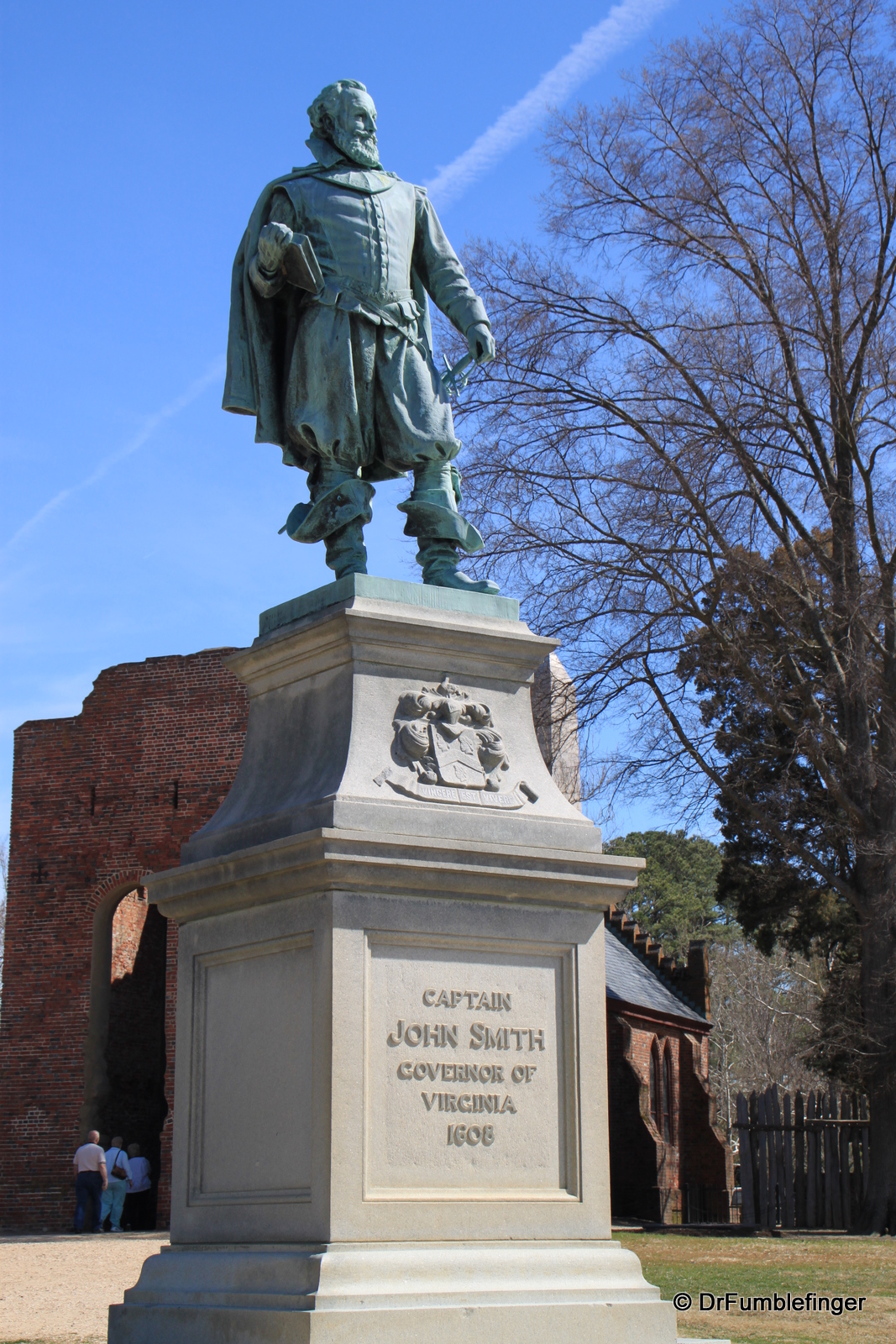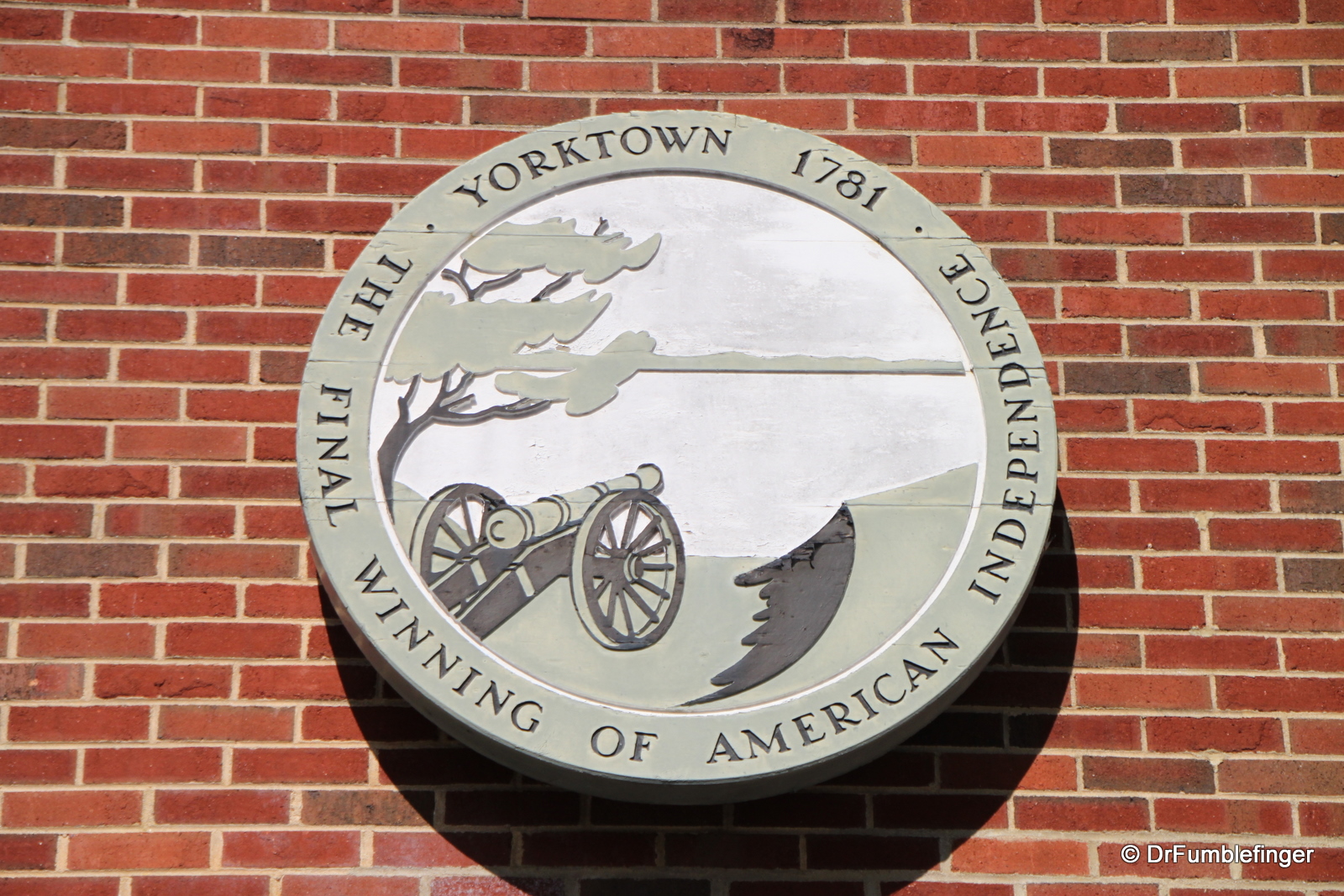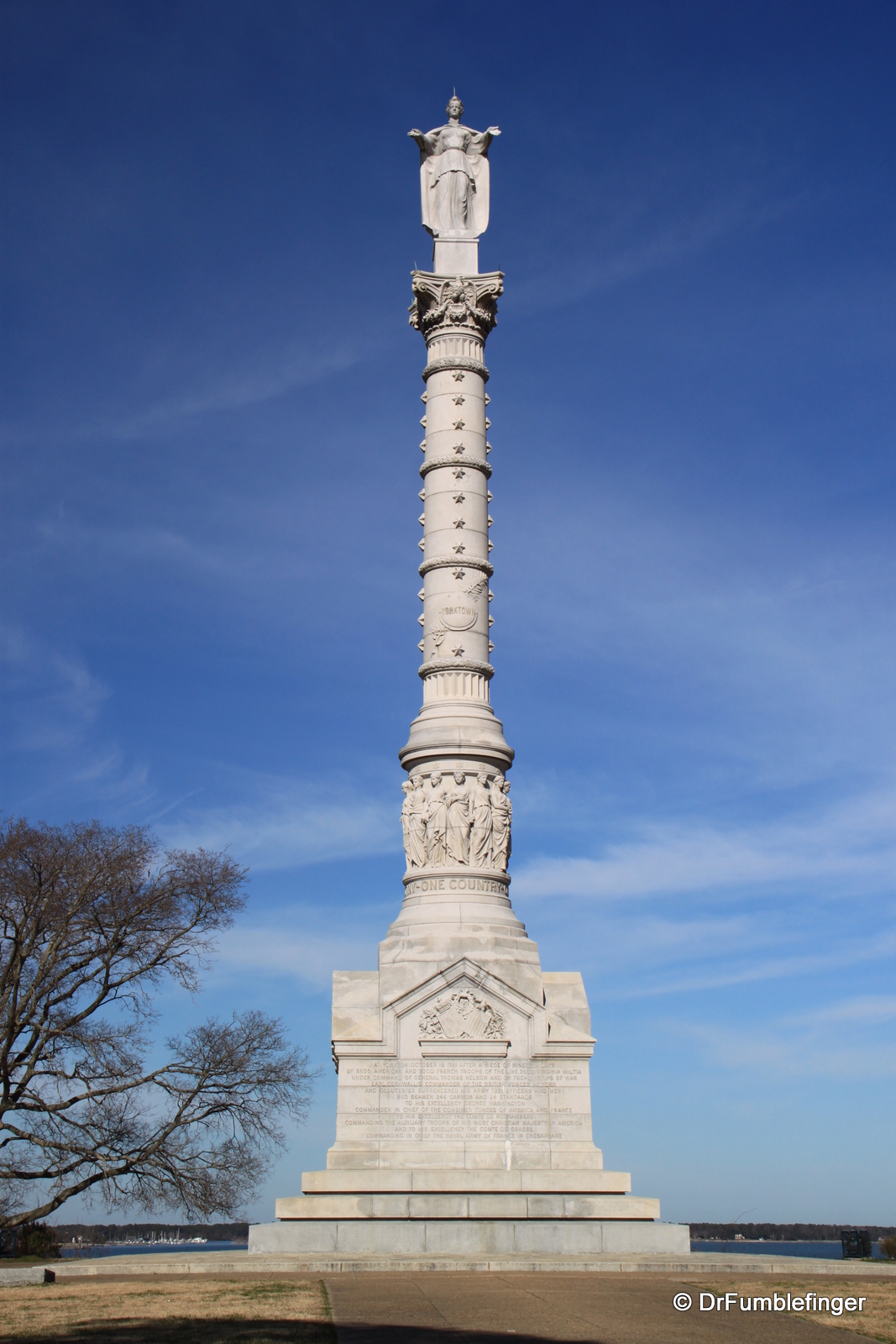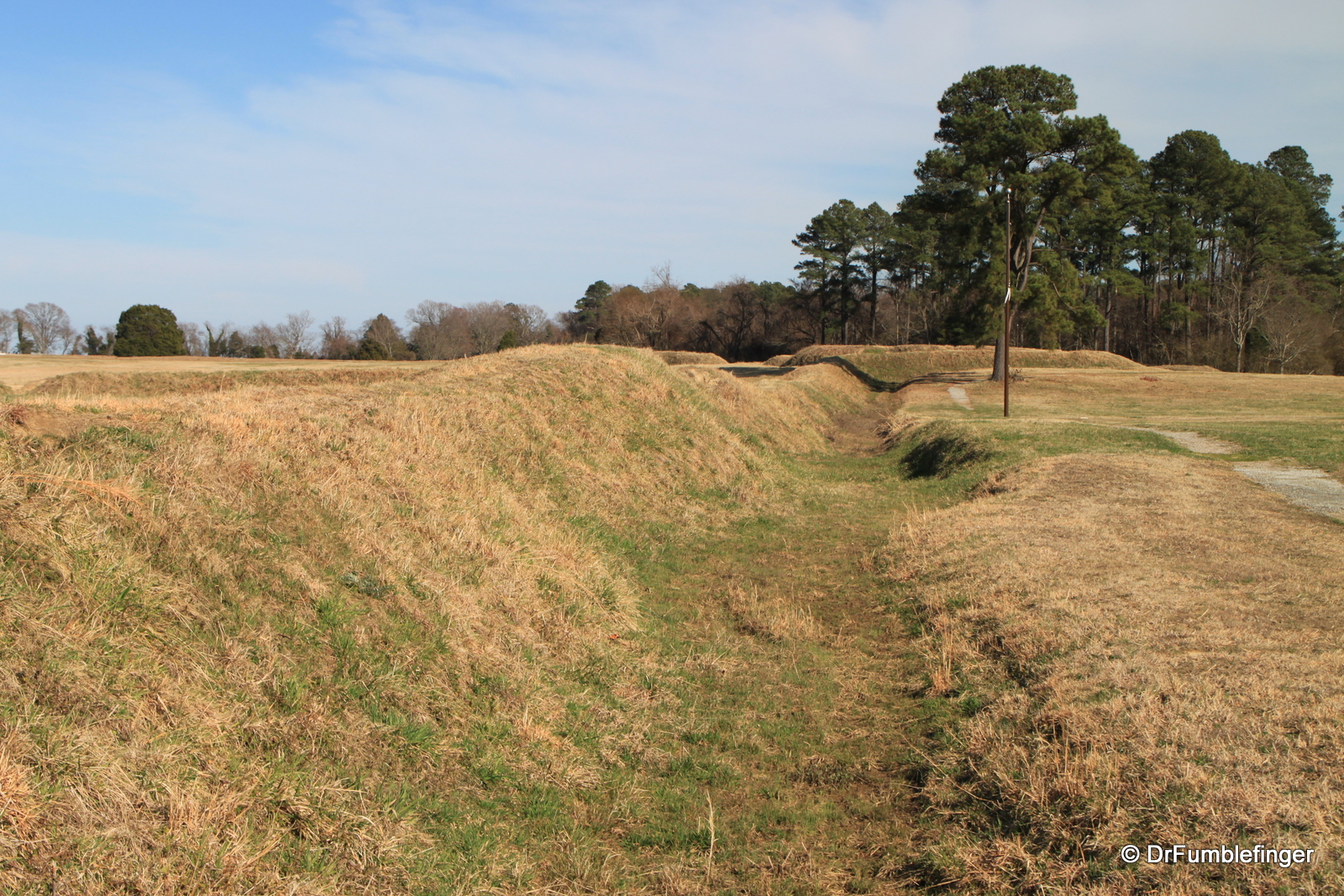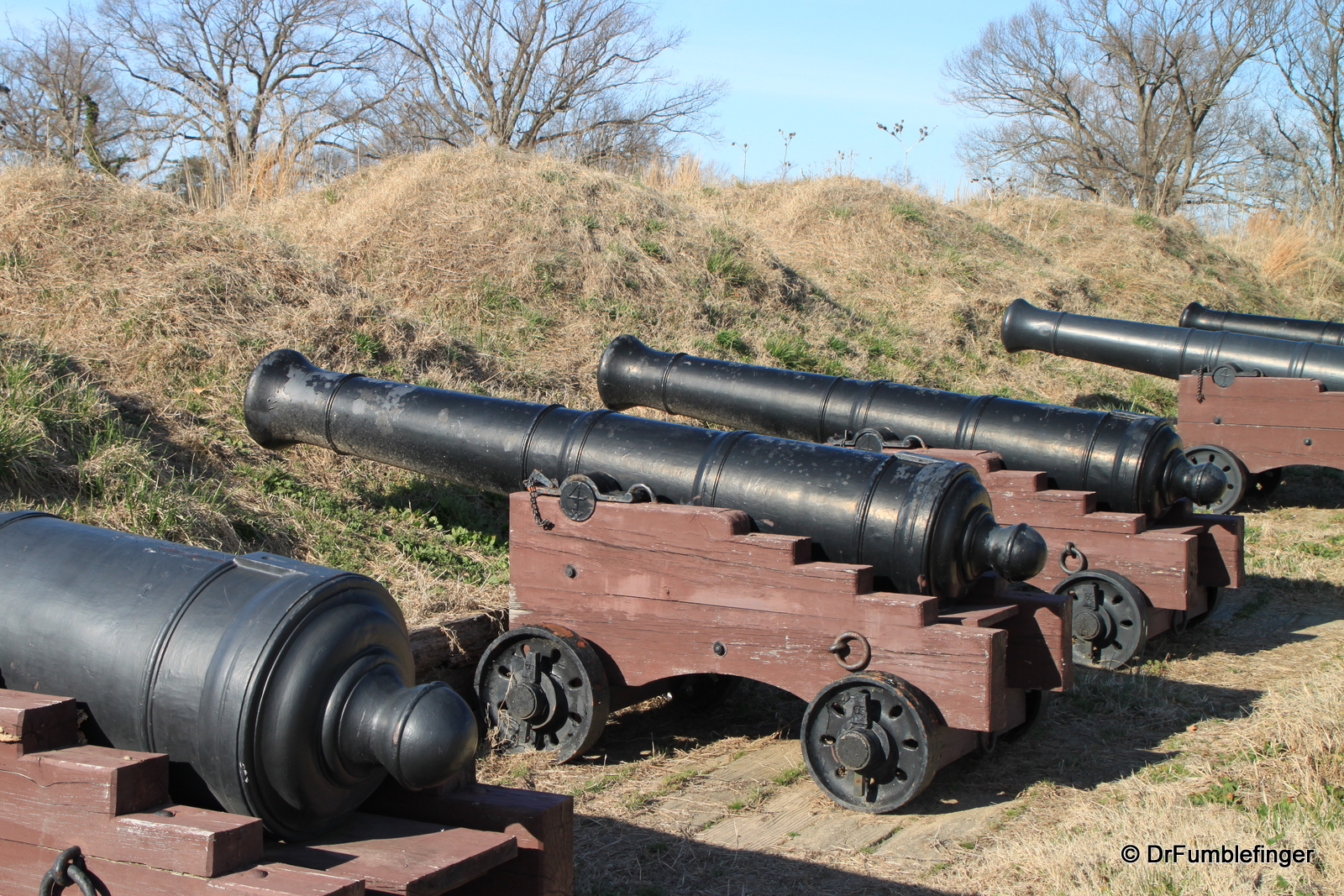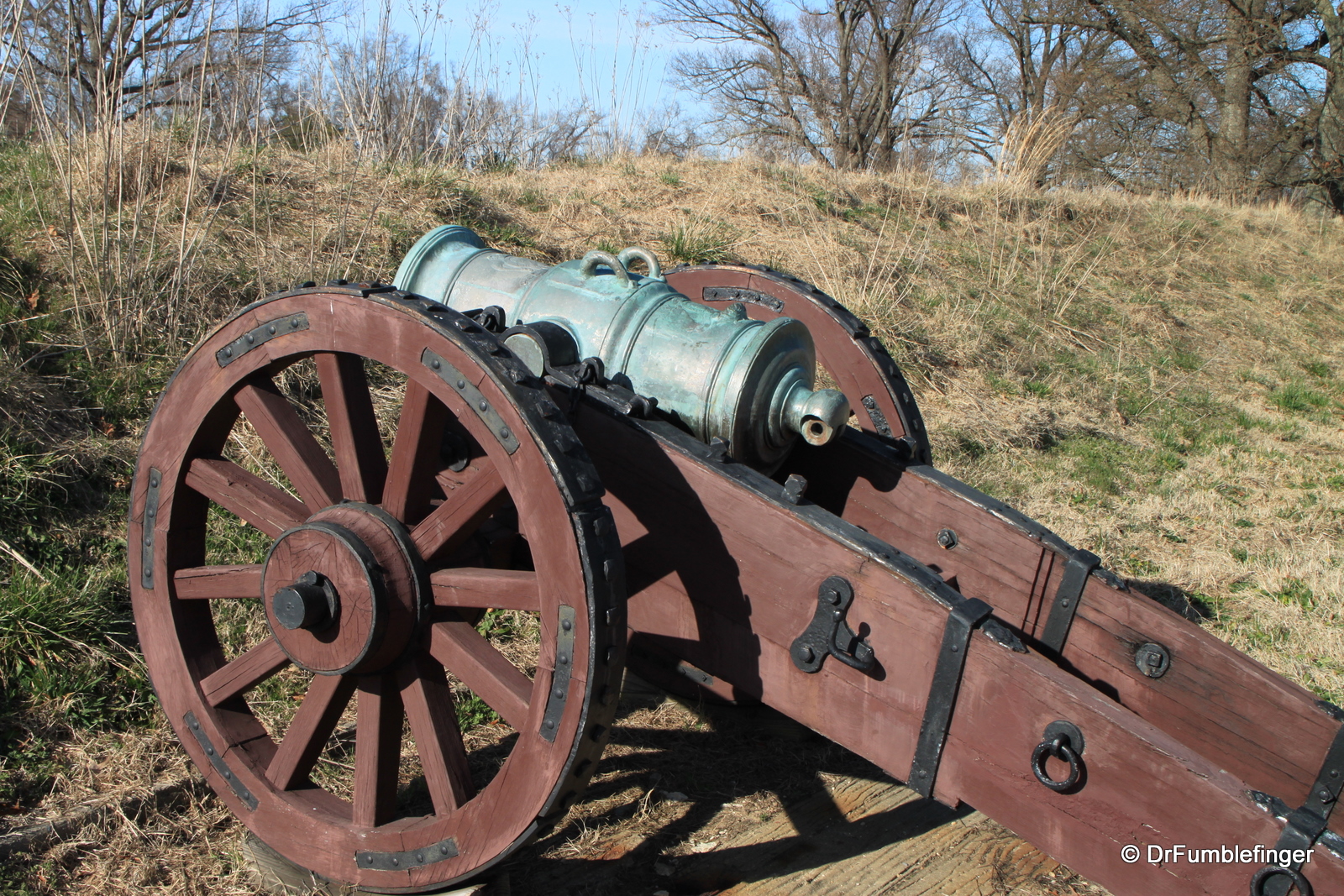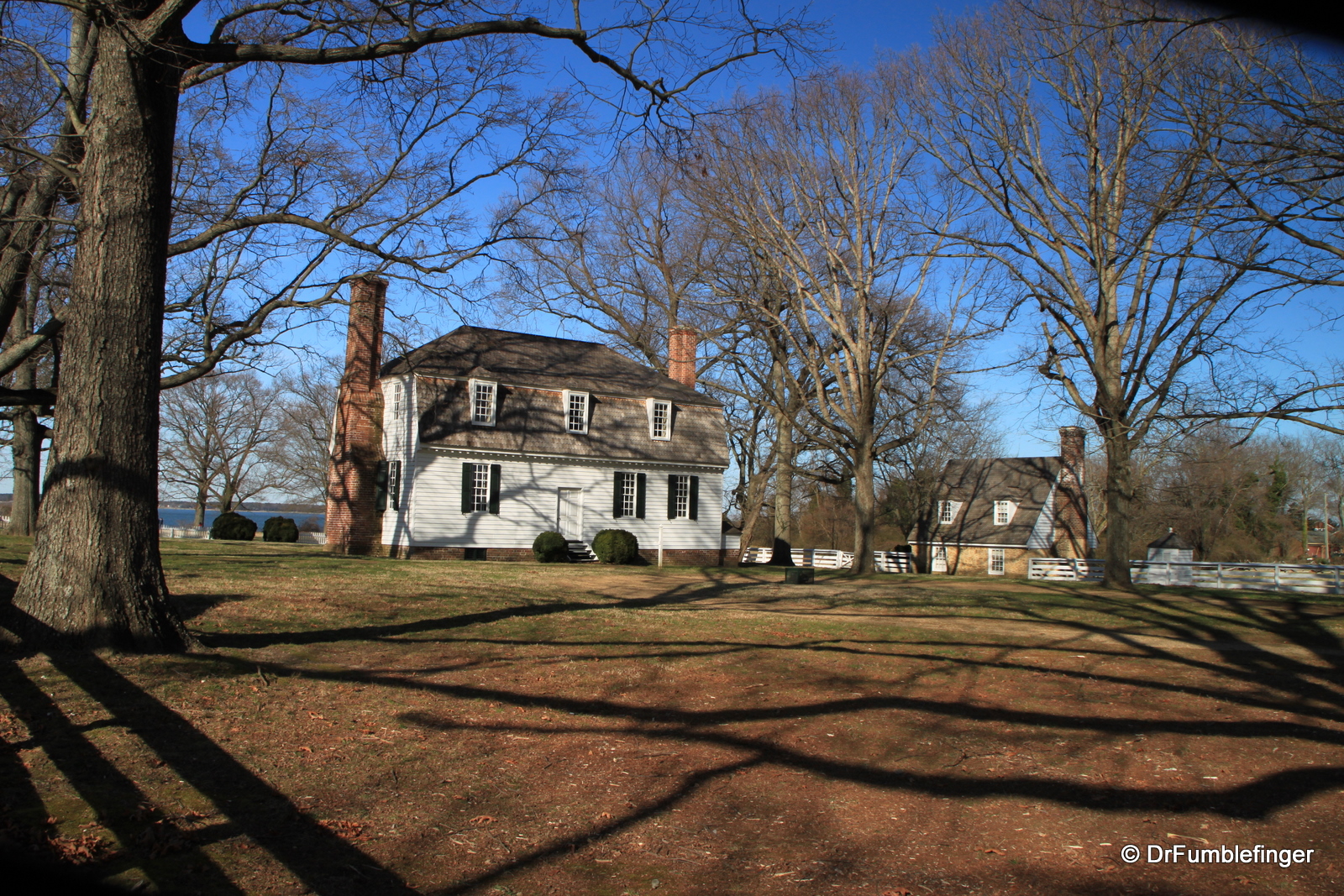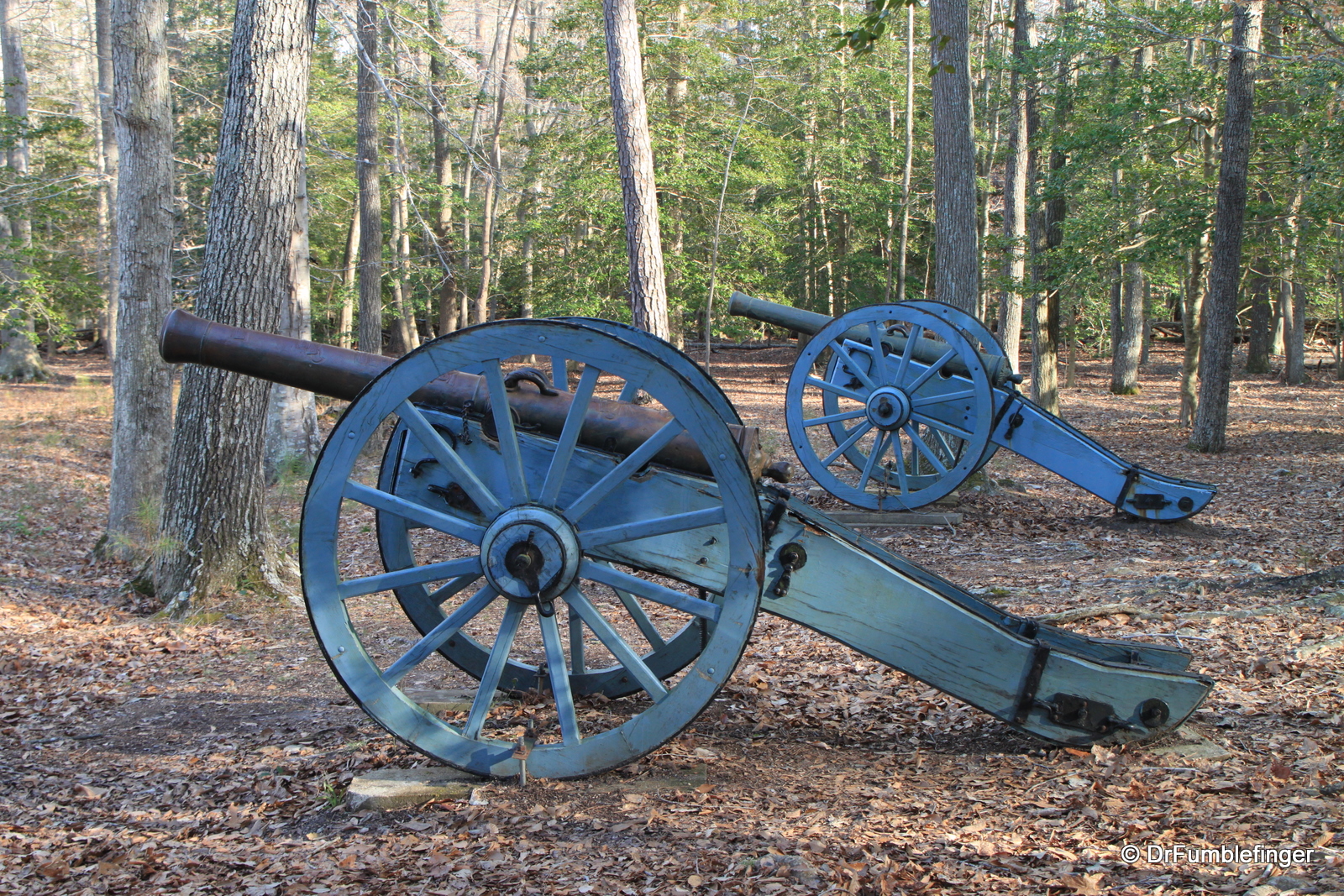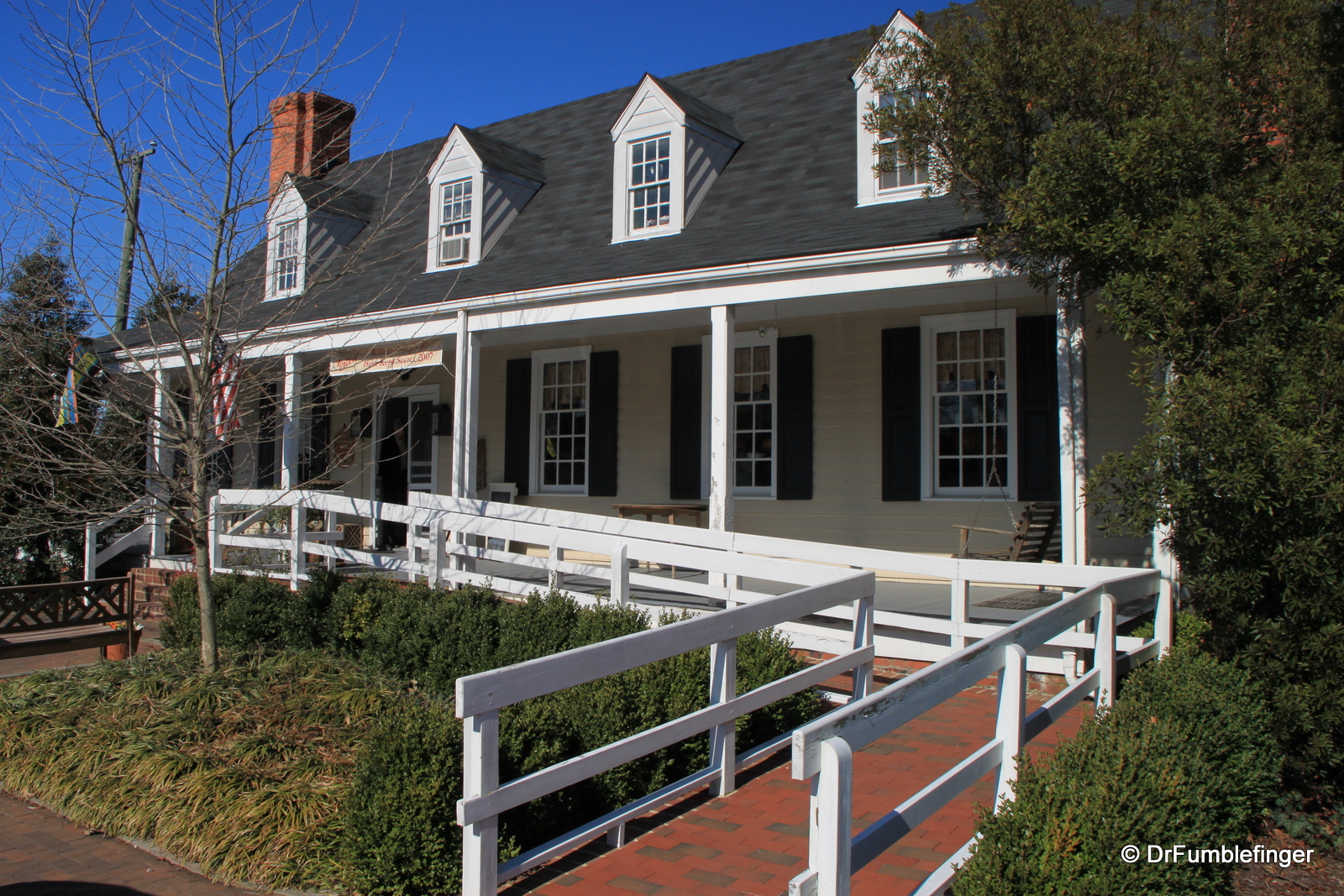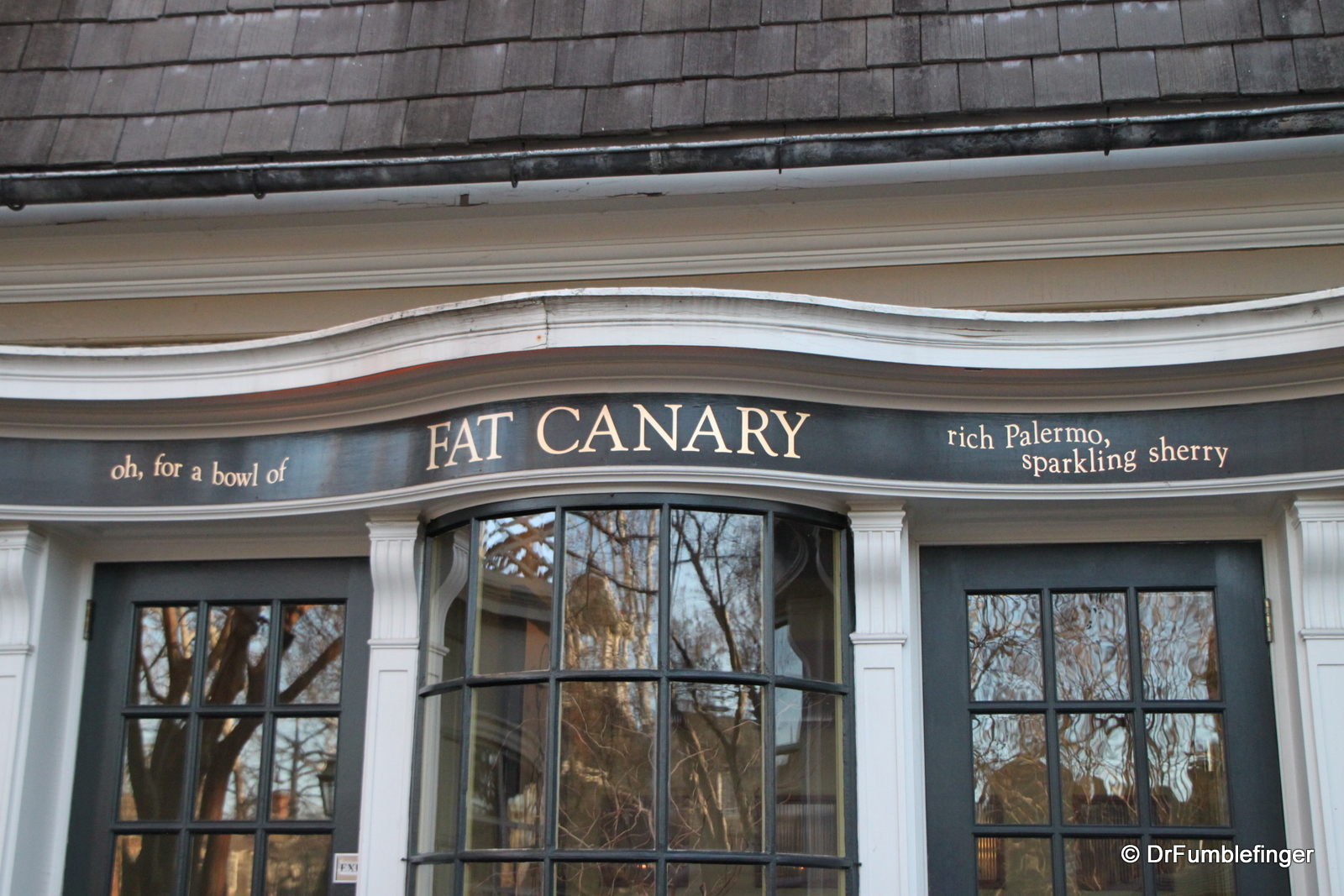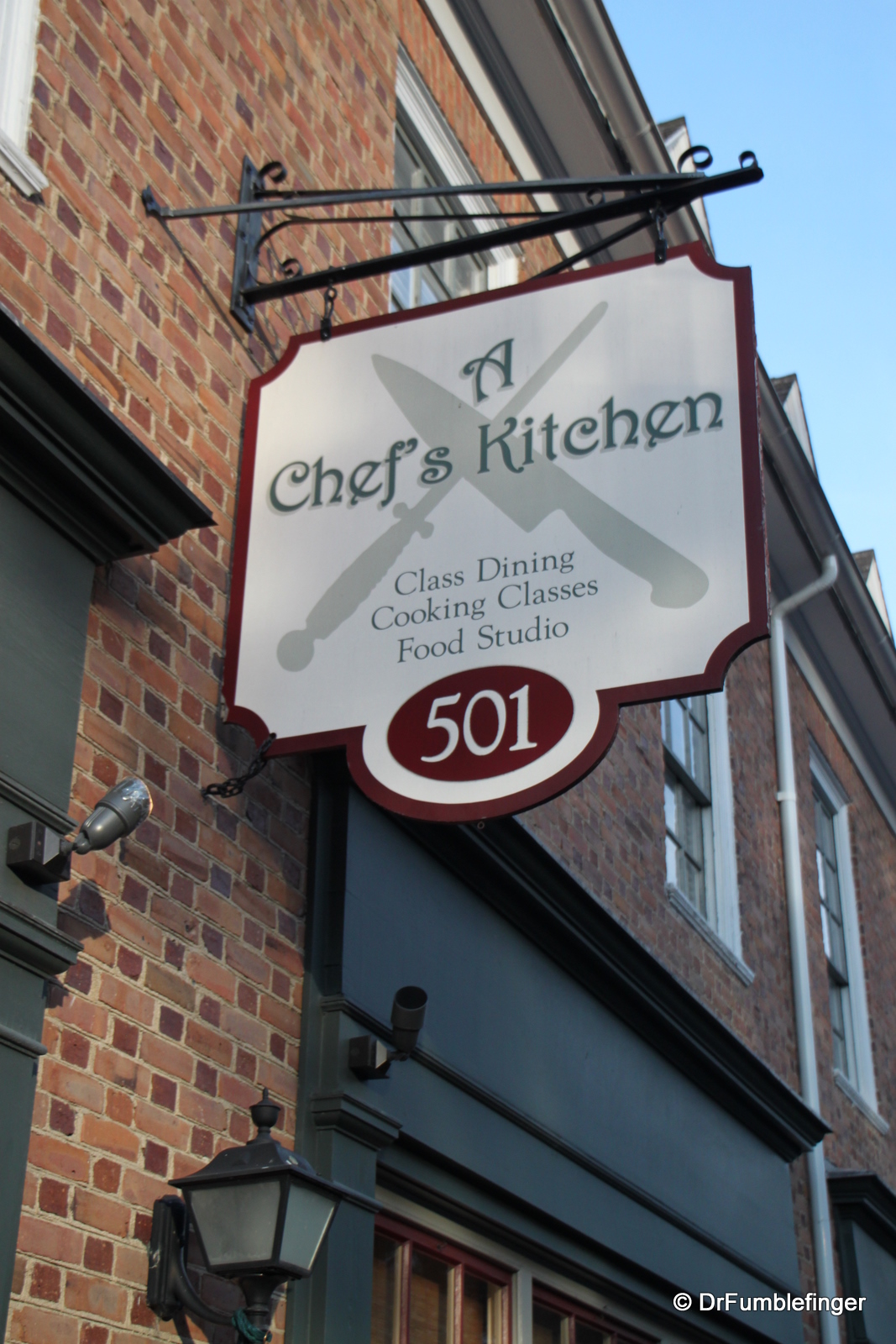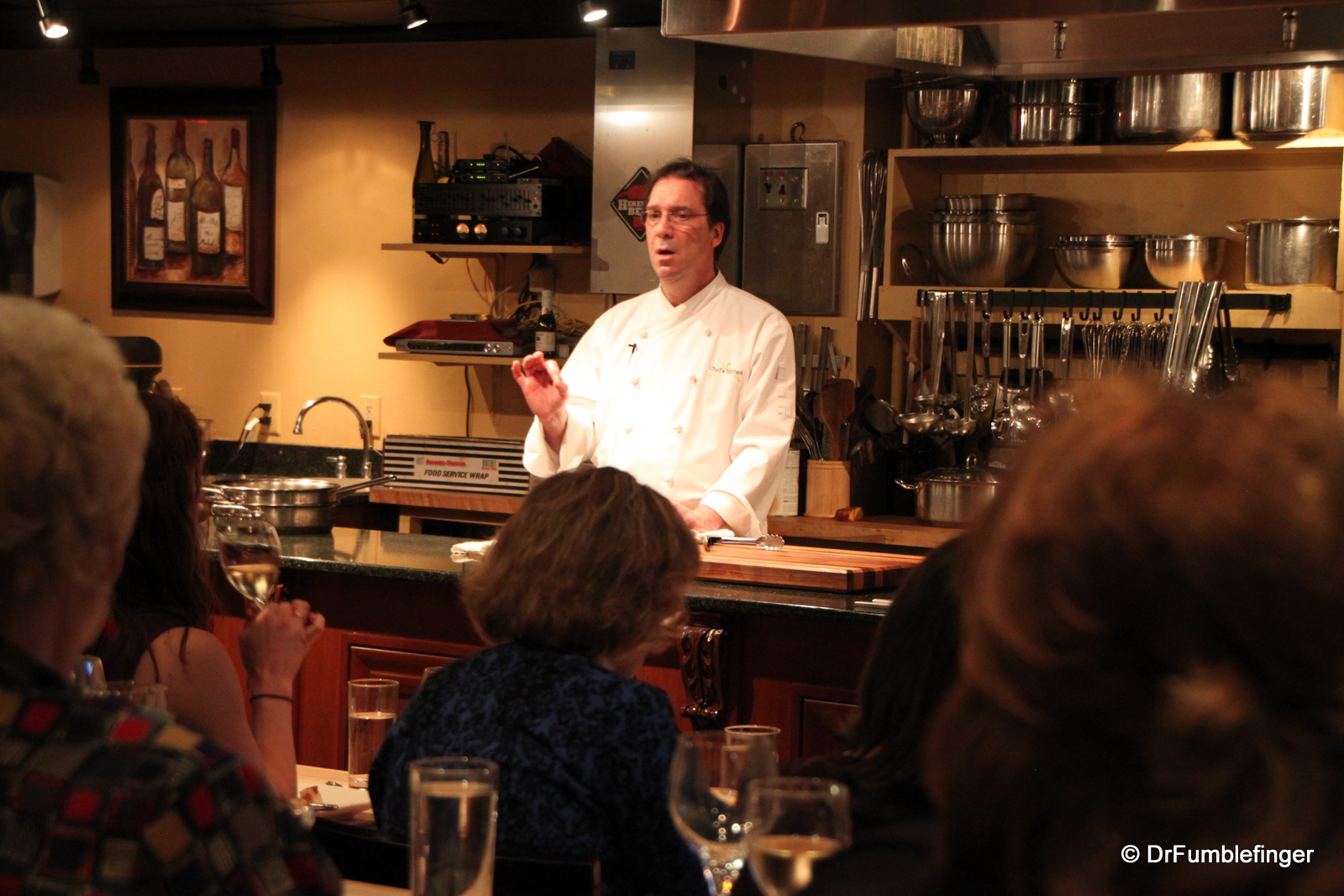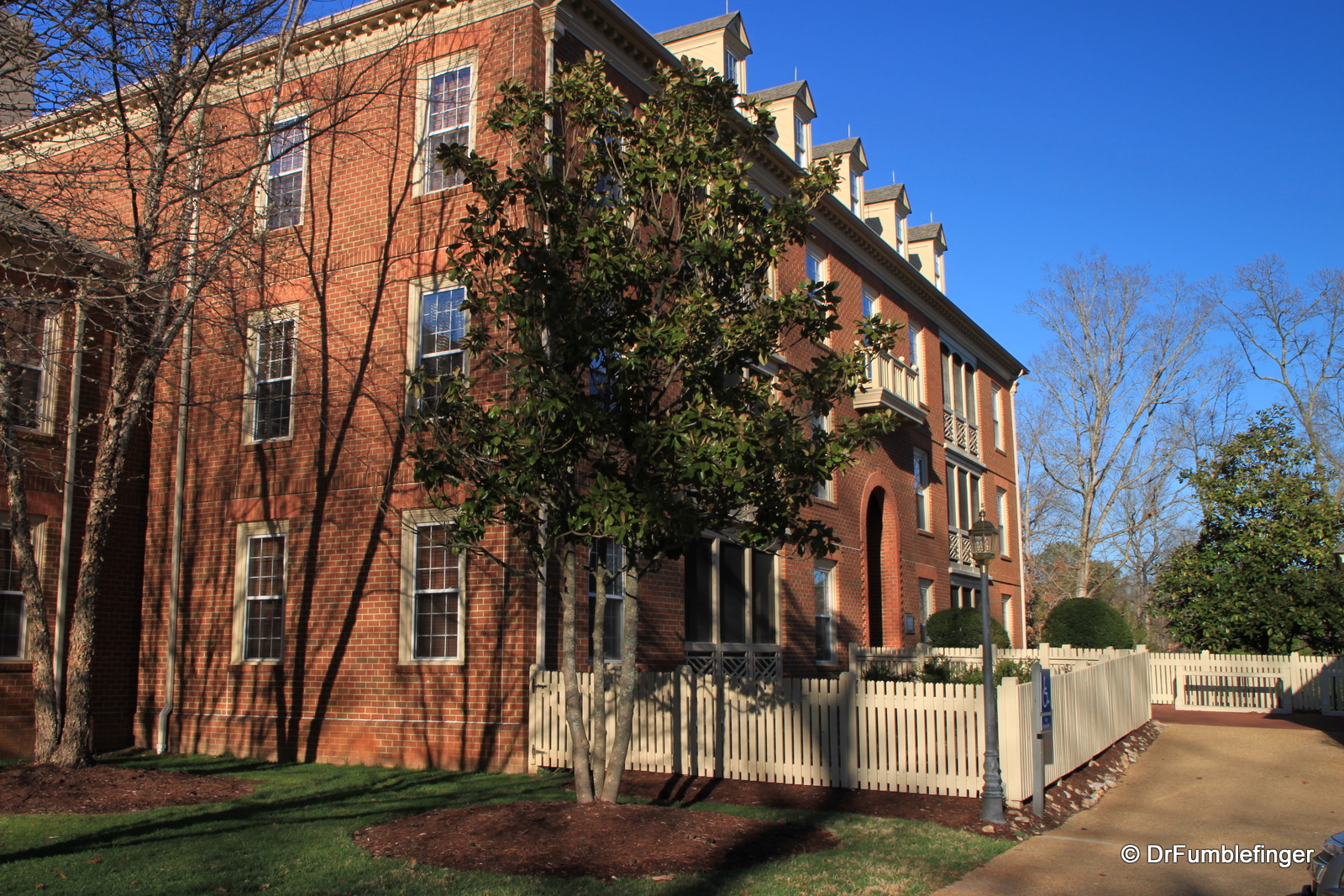
Besides a visit to Thomas Jefferson’s Monticello, an important reason for our trip to Virginia was to explore its famous historic triangle. The points of the triangle are three towns — Jamestowne, Williamsburg and Yorktown — situated on a peninsula between the York and James Rivers, about an hour’s drive east of Richmond. Jamestowne was the site of the first successful British Colony in America in the early 1600s. Colonial Williamsburg is a fascinating place, beautifully preserved and restored to the mid 1750s, and Yorktown was the site of General George Washington’s final victory in our Revolutionary War against the British Crown — winning independence for the American Colonies after a long and difficult struggle.
Colonial Williamsburg
Williamsburg was Capitol of Virginia during the American Revolution in the 1770s (Jamestowne was the capitol in the 17th century and now Richmond is the state’s Capitol). It was where Virginians voted to adopt the Declaration of Independence. It took me awhile to understand that there is the thriving city of Williamsburg, within which there is Colonial Williamsburg (the preserved historic city), though it is so quite simple. My discussion will mostly focus on Colonial Williamsburg.

Armory, Governor’s House
Spending a day at Colonial Williamsburg is the closest thing I’ve ever experienced to traveling through time. This beautifully preserved old town, unique in America, is meticulously crafted to give you the impression that you’ve stepped into the past. The restored town is centered on the Duke of Gloucester Street, a one mile long gravel road that forms its heart. The city stretches radially a block or two beyond this main artery. It is here that you will want to spend one or two days to immerse yourself in the past. Walk on the same streets that George Washington, Thomas Jefferson and Patrick Henry did, and take in the sights and sounds of the town which (except for the throngs of tourists) haven’t changed much in the past two centuries.
Colonial Williamsburg contains many original and beautifully reconstructed buildings, most of which are open to you for a visit. Often you’ll be given a tour by staff, people dressed in period costumes. You’ll see dozens of costumed actors — women in long dresses and bonnets, gentlemen with britches and old-style hats. African-Americans are dressed as workmen or household help, or as “slaves” accompanying their white “masters”. Watch blacksmiths crafting horseshoes and other iron implements and tools. Interact with highly skilled cabinet makers who still built period furniture (that is very much in demand today). Enjoy the sights of women weaving baskets, citizens planting their gardens, a farmer walking his ox-pulled wagon through the town, or people on a carriage ride (which is available to anyone for hire). You’ll see sheep and horses grazing and your blood pressure and pulse will drop considerably at the many peaceful scenes around you. Enjoy ale and colonial food at one of the town’s taverns. Stop by the magazine, courthouse and goal (ie. jail).
There are several main buildings everyone should visit and spend some time at. Foremost among these is the Governor’s house, home to the British Royal Governor, the King’s Representative to his Virginia Colony, built to represent the period just before the Revolutionary War. The home is a meticulously reconstructed mansion and make sure you take a tour of it. Enjoy the period furnishings, lavish displays of swords, pistols and muskets, elegant dining and ball rooms, and take time to stroll thru the spacious gardens outside the Governor’s home, including a maze. Beneath the home is a spacious and well preserved wine and food cellar that’s also worth a visit.

Character actor, Wlliamsburg
Another must-see building is the Capitol, which is at the east end of the Duke of Gloucester Street (its the large one with the British flag flying over it). Take a tour and learn about how laws were crafted in Colonial Virginia and how justice was dealt out in its courtrooms.
The harsh retribution by the King George III of England against all the citizens of America for the Tea Party, committed by a few hundred Bostonians, fueled the embers of Revolution in this city. Virginians are fiercely independent and proud people, and it is this spirit which the actors in Colonial Williamsburg portray. For several hours each day, the actors in period costume will play out scenes as they might have occurred at the time the Declaration of Independence was invoked. See their anger, resentment and even fear as these scenes unfold at varying outdoor venues in town (consult the visitor’s guide which you will receive when you pay your admission for specifics).
Colonial Williamsburg is a living Museum and a great travel experience. Be sure you spend at least a full day here just for an overview and tours of the main buildings. You’ll need at least a second day if you want to explore many of the homes and engage extensively in the scheduled activities. It would probably take a week to do everything thoroughly.
Williamsburg is also home to Bush Gardens, President’s Park and Water Country USA. These should provide diversion and entertainment for those with smaller children. Kids will probably find all that history stuff to be a little boring and want to “do something more fun”.
The College of William and Mary occupies a large part of Williamsburg town and is America’s second oldest university (Harvard is the oldest). Drive or walk thru the beautiful campus if you have time. The town is home to many fine hotels, resorts, gold courses and restaurants, as well as excellent shopping.
Jamestowne
Founded over 400 years ago (in 1607), Jamestowne was the first viable British colony to be established in America. Despite many hardships and numerous deaths during the first years, the struggling colony managed to press on and ultimately survived, especially when it began producing tobacco for export back to Britain. While I am not a politically correct person, in fairness it needs to be mentioned that America Indians had thrived in this region for thousands of years before the Brits arrived. The colony was run for a year by John Smith, and later was protected by the Indian princess Pocahontas. It was the Capitol of Virginia until the late 1600s, when Williamsburg emerged as the new Colonial Capitol. The site is now run by the National Park Service.

Recreated Fort, Jamestowne
Your first stop to Historic Jamestowne will be at a glassblowing building, situated at the site of a small historic glassblowing facility close to Jamestowne. While that first glassblowing site was a failure and ultimately shuttered, you can watch costumed artisans heat and blow glass and make a variety of 17th century style glassware for your observation and optional purchase in the gift shop. Items include glasses, decanters, vases, cups, etc. They are sturdy, well crafted and attractive.
From the glassblowers you will drive over a narrow isthmus onto a peninsula (it was an island at the time of the original colony). Your next stop will be the Visitors center, which features an interesting and worthwhile film on the colony as well as historic exhibits and artifacts. Over 1,000,000 artifacts have been recovered by archaeologists at Jamestowne.
From the visitor center you walk across a bridge on your way to the town site, You’ll cross a gloomy and somewhat smelly swamp (keep an eye out for turtles sunning themselves). You will see a tall monument which was placed to commemorate the 300th anniversary of Jamestowne’s founding over a century ago. Ahead lies a reconstructed triangular fort, built to the specifications of the original fort. Beside the fort is a beautiful Memorial Church, built in 1907 on the original foundations of the first church at the site. A small cemetery and monument to Pocahontas are adjacent to the church. Walk to the Archaerium, a museum that has done a nice job describing and documenting the archaeological work in the area. Walk around some of the ruins that lie immediately outside of the fort. Return to your car for a 5 mile loop drive around the swampy island if you want to get a feel for how the land looked at the time of the original settlement.
A visit to the Jamestowne historic site will take about a half a day and often is combined with a visit to Yorktown, which will require another half day. Near to the historic site is the recreatedJamestown Settlement which we did not visit.
Yorktown
Yorktown was the site of the last major battle of the Revolutionary War, wherein General George Washington and his rag-tag band of Rebels (with some important help from the French) defeated British General Cornwallis’ entrenched forces. As such, it was a major turning point in American history.

Cannon Display, Yorktown
Your visit should begin at the National Historic Park’s Visitor Center where a good film summarizes what happened during those fateful days. There are a few exhibits on display, notably General Washington’s actual tent and camp set-up.
As you leave the visitor center, you can either walk or drive into the town of Yorktown, where the British troops were firmly dug in. The landscape is dominated by a tall Victory monument. Many original homes from the era line the streets and its fun to explore.
Fortunately the battlefield is well preserved and has seen minimal development these past two centuries. Its best explored by car. A 17 mile drive encompasses the major battlefield and encampment sites of American and French troops. The land now is tranquil and its a pleasant shaded country drive.
Dining
Many fine restaurants are situated in Williamsburg. The taverns of the historic town site serve tavern fare and ale. Southern style breakfast and lunch are available at the Old Chickahominy house, a local landmark. They feature Virginia ham, a salty smoked ham that is not recommended for those with high blood pressure but is popular with locals. The grits and pancakes were really great, though. We had a terrific dinner at the Fat Canary, but the highlight of our dining this trip was a visit to A Chef’s Kitchen. Chef Paul Gonzales and his wife got their inspiration for this restaurant from watching Emeril on T.V. — when only a single celebrity guest in the audience was allowed to eat the delicious meal Emeril had prepared and everyone else just had to look on. Chef Gonzales thought that everyone in the audience should be involved and a new restaurant concept was born. A Chef’s Kitchen is designed like a lecture hall. The lectern area is a full kitchen where the food is prepared. The dining/audience area consists of three rows of long tables, all facing the kitchen. Appetizers begin at 6:30 and a multi course dinner begins at 7 and runs until around 9:30. The chefs share their secrets in food preparation, quality ingredients, and answer any questions the audience might have. After wonderful soup and salad we enjoyed a scallop dish, guinea hen, baked root vegetables followed by fresh Meyer lemon cheesecake and pineapple chocolate for desert. Everything was prepared as we watched (and salivated) and it was a fabulous meal! It comes with our highest recommendation.
(Click on thumbnails to enlarge, then right arrow to advance the slideshow)
